#gruffydd ap rhys
Explore tagged Tumblr posts
Text
Nest of Deheubarth and Gwenllian ferch Gruffudd ap Cynan
Lemme talk about two fabulous Welsh women who deserve to be yelled about more because they occupy fascinating roles in Welsh history and also they were SISTERS-IN-LAW. If they'd met I do think they would have a very Morgan Le Fay and Guinevere relationship (without the casual murder? Hmm.)
Anyways, Nest of Deheubarth (Also known as Nesta, or Annest, was the 'Helen of Wales,' which, seriously, we gotta stop appellating Helen of Troy to women whose beauty starts wars. It is a handy metric, but, like, neither were THEIR FAULT.) daughter of Rhys ap Tewdwr - yes, as in the Tudors. They have links to them through Rhys' son, Gruffudd - and Gwladys ferch Rhiwallon ap Cynfyn of Powys. (Said it before will say it again intermarriage between Gwynedd, Deheubarth, and Powys is super common.)

(This is Nest with Henry II. Note how they both have crowns on in bed. Like, I know it's to telegraph they're royal but like imagine them kissing. *clang* sorry, my crown keeps slipping off my head *clang* sŵs.)
Anyways, born in about 1085 (give or take) Nest was Princess of Deheubarth. Normally, this would entail being married to another Welsh royal family - and possibly your cousin, yeesh - but, sadly (or happily depending on your view) this was not to be the case for Nest.
Her father, Rhys, was King of Deheubarth until 1093. Deheubarth had largely been left untouched by the Normans thanks to a peacy treaty brokered by Rhys and thr King of England William Rufus but, sadly, Henry I soon put a stop to that after his brother, William Rufus' death. (For those wondering he got shot in an arrow in the New Forest. Some say Henry did it so he could assume the throne)
Rhys perished in battle at Breacon against Bernard de Neufmarche's forces, with him being beheaded at Penrhys in Rhondda Cynon Taf (Penrhys literally means Rhys' head.) Brut Y Tywysogion records: 'Rhys ap Tewdwr, king of Deheubarth, was slain by the Frenchmen who were inhabiting Brycheiniog, and with him fell the kingdom of the Britons' His death allowed the Normans to take Deheubarth unopposed and they wouldn't even begin to break their yoke until Gwenllian.
Anyways, Nest, her mother, her half-brothers, and her sisters were captured by the Normans once they'd murdered Rhys and were sent to either prison or the Anglo-Norman court to live as hostages to prevent any further rebellions. Meanwhile, Nest's younger brother, Gruffydd, was spirited away to Ireland (more about him later!).
But even there Nest wouldn't exactly be allowed to fly under the radar. She grew into a beauty - don't all captured foreign historical women, honestly? Like, grim - and caught the eye of Henry I, becoming his mistress, bearing him a son -- also called Henry* as it goes. See, having the same name as your dad is just a Welsh trait, ngl.
Soon after, in around about 1102 but possibly later, and once Henry I had dealt with some rebellions from his subjects (namely Robert de Bellême) he married Nest off to Gerald FitzWalter who was the constable of Pembroke Castle, purely cuz he sided with him. Nest's feelings are not recorded in history, but I'd imagine she was both delighted to be going home to Wales and distraught that she was married to a Norman lord who'd had a hand in subjugating her country.
Either way, with her marriage to Gerald she was both seen as a Norman - as were her sons, collectively known as the Geraldines, famous for subjugating Ireland, and nephew, Gerald of Wales - and as a figurehead for Welsh resistance.
And it's this that gives her the claim for being the Helen of Wales. Now, various reports of how shit went down are given but the facts are thus: in either 1106 or 1109 her cousin, Owain ap Cadwgan, Prince of Powys, kidnapped Nest and her sons. Gerald escaped either by escaping down the latrine (smelly toilet pit) or fighting his way out. Some say this was during an Eisteddfod given by Owain's dad, some say this was at Cilgerran Castle, a Norman castle that Gerald had built. Idk. Either way, she was once again, a hostage. Kari L. Maude says Owain was 'overcome by her [Nest's] charm,' but, equally, he could've been making a point of raiding the castle to spite a Norman and carrying off his cousin to try and force the Welsh to rebel. 'What is clear,' Maund further writes, 'Is that Owain was engaged on a consistent campaign against the Norman colonies in Wales.'
(OR, Nest had engineered the whole affair deliberately cuz she and Owain were lovers. There is talk that Owain was gonna be betrothed to Nest before everything that occurred but that is spurious speculation so idk. Whatever floats your boat, I guess.)
ANYWAYS. The earliest account of this shenaniganery we have is by Caradoc of Llancarfan which relates that: 'At the instigation of the Devil, he [Owain] was moved by passion and love for the woman, and with a small company with him...he made for the castle by night.' Once he'd done this he took Nest and her kids to a hunting lodge by the Eglwyseg Rocks north of Llangollen, presumably to live in what he thought was relative peace.
Hoo boi, he was WRONG. The abduction of Nest, done with her consent or not, aroused the wrath of both the Normans (for obvious reasons those HEIRS ARE NORMAN-BLOODED GIVE THE SONS BACK) and the Welsh (I guess because this was seen as a Welshman abducting a Princess of Deheubarth? Unsure.) Either way, the Normans bribed Owain's Welsh enemies to attack him which they did. (Pls remember that the Powysians hated Deheubarthians and Gwyddelians hated them both ect, etc.)
Owain's dad throughout all of this desperately tried to persuade his son to give Nest back ('Pls, pls, pls, Owain, your himbo arse has gotten us into SO MUCH SHIT!' I can imagine him saying. This does, however, ignore the fact that Cadwgan himself was sanctioning his son's raids.) With Owain just brushing him off. Nest, once again, saves a man's life and entreats Owain: 'If you would have me stay with you and be faithful to you, then send my children home to their father.'
Owain did so, but before long, both he and his dad were then obliged to seek safety in Ireland lest further attacks were made on them. Nest was also returned to her husband. Whether willingly or not idk but yeah.
Now, by this time (1112), her brother Gruffudd had returned from his sojourn in Ireland and was trying to drum up support to get Deheubarth back under his rule, particularly with the aid of the King of Gwynedd, Gruffudd ap Cynan, who would ultimately become Gruffydd's father-in-law when Gruffydd married his daughter, Gwenllian 🥳🥳🥳. It's interesting to imagine that Nest was giving her brother a hand in this but we have no textual support to say so. Tbf, perhaps she did and she was just so good at doing it that it's just remained undetected for hundreds of years. 🤷🏻♀️
War broke out between Gruffydd and the Normans. Gruffydd, expecting to have his inheritance given to him and no liking to hear the word 'NO' yelled at him Henry I with a fuckin megaphone, fuckin burned Carmarthen and then destroyed Arberth in 1115, alongside 'members of the younger nobility'. (As he should, in all honesty.)
Owain ap Cadwgan who had, by this time, tootled back from Ireland, been PARDONED BY THE KING (Henry I, that is.), and became prince of Powys after his dad was ASSASSINATED (Assassin's Creed: Powys edition when?) Obliged by Henry I to rendezvous with a Norman force to proceed against Gruffydd, Owain found himself meeting up with Nest's husband, Gerald.
( Sjdjxjxjddkxj Could not make that up. Sounds like a Hollyoaks episode.)
Gerald, wanting to fuckin Murk Owain for what he did to his kids and wife, proceeded to Murk Owain. I do honestly feel like Gerald also thought 'If he kills my bro-in-law my wife will fuckin KILL ME.' so I respect this for being In Fear of his wife.
Gerald himself died in 1135, yet Nest delightfully, was still going. She married Robert FitzStephen, having another kid to the five she'd already had with Gerald, including the mother of my arch-nemesis Gerald of Wales, Angharad.
It isn't known when she died but it's estimated that it was about 1135/1136, thus allowing her to see the start of her brother and sister-in-law's rebellion that would eventually put the land that the Normans had so cruelly taken from the back into the hands of their family.
A note:
*Henry would later be killed in Ynys Môn during a battle against Nest's brother-in-law Owain Gwynedd, coincidently led by Owain's son - and my fuckin pookie - Hywel ab Owain Gwynedd. Apparently, again according to the Brut, Henry died 'by a shower of lances.'
Up next: Gwenllian!!!!!!!

Sadly we have no drawings of Gwenllian, but that's okay cuz artists are more than up to the challenge. Also, idk why but the fact that she has red hair is generally accepted even though we don't know how she looked. I guess it's because bravery is telegraphed as red, or at least fieryness which, ngl, she defo was.
Born in about 1097, Gwenllian was the daughter of the King of Gwynedd, Gruffudd ap Cynan, and his wife, Angharad ferch Owain.
Gwynedd, at this time, was perhaps the most stable of the Welsh kingdoms, although Gruffudd ap Cynan HAD had to battle like fuck to free Gwynedd from the Normans before he could even sit on the throne. (He got thrown in Chester for a time and had to be rescued by a very tall man called Cynwrig. Will do a post on him because he's FUN) so rebellion is very much in Gwenllian's blood. We don't know much about her childhood although we can assume it was happy and filled with the various activities of a Welsh Princess.
Still, that would soon shift.
Gwenllian, at around about thirteen /fourteen or so (remember girls became women when they reached 14 under Welsh law), soon became involved with Gruffydd ap Rhys after her father hosted him when Gruffydd was hoping to summon up aid for his Getting Rid of the Normans scheme.
Unfortunately for Gruffydd - who I will now call Griff so as not to confuse with Gruffudd ap Cynan - this place at the Gwyddelian court became tenuous. Gruffudd ap Cynan, unwilling to further inflame tensions with the Normans after he'd just recovered Ynys Môn (Anglesey) from them and now ruled kinda peacefully, elected to hand Griff over to them. Somehow - probably through Gruffudd ap Cynan's nobles - news of this rescued Griff and he once again left for Deheubarth.
Only he wouldn't travel alone.
Gwenllian, unwilling to let the man she loved slip away, eloped with him and became his wife. They soon became 'the Robin Hood's of Wales' as Philip Warner writes and set about killing the Normans. Griff, emboldened by his and his wife's success hastened to meet with his father-in-law, Gruffudd ap Cynan, in an effort to get troops.
So, Gwenllian was left to helm her husband's forces by herself. To be fair to her SHE DID. AND honestly, this is why she's compared to 'Buddug' or Bouddica. Normans led raids a just as she and Griff had done against them- and she was compelled to rise an army for Deheubarth's defense.
The Great Revolt of 1136, as it was known, was to be Gwenllian's last conflict for she and two of her sons, Maredudd and Maelwgyn were beheaded by the Normans after their forces were routed at Cydweli Castle. Yet Gwenllian would not be forgotten. Her youngest son, the Lord Rhys, would become Prince of Deheubarth and recover much of the territory that had once been their family's. And Nest? Well, Griff had sent time in her and Gerald's castles as he went about letting how to get Dejeubarth back. It's tempting to think that she and Gwenllian met.
Also, Dr Andrew Breeze HAS argued that Gwenllian is the author of the Mabinogi because much of the action takes place in Gwynedd and Deheubarth where Gwenllian was based. Might it have been a tract to inspire people to rebellion? Or for women to know their worth? It's tempting but we'll never know. We can only guess. All we can say is 'Dial Achos Gwenllian!'
(That's Revenge for Gwenllian btw. Long may she reign, as it were.)
#gwenllian ferch gruffudd ap cynan#nest ferch rhys#house of aberffraw#house of dinefwr#welsh#wales#cymru#welsh history#hanes gymaeg#mytholeg#welsh culture#welsh stuff#welsh mythology#the mabinogion#mabinogion#welsh myth#welsh folklore#the lord rhys#owain gwynedd#y mabinogi#y mabinogion#the mabinogi#norman conquest of welsh#the laws of hywel dda#the tudors#arthuriana#queen guinevere#morgan le fey#gruffydd ap rhys#king arthur
21 notes
·
View notes
Text
Katherine Daubeney, née Howard, was Anne's mother's half-sister, and served as chief female mourner at Elizabeth Boleyn's funeral in 1538 [...] Following the execution of her first husband, Rhys ap Gruffydd, for treason in December 1531, Katherine married Henry Daubeney, the future Earl of Bridgewater. Theirs was not a happy marriage and, by 1535, both parties were actively seeking a divorce. In early October, Katherine appealed to Cromwell for support, and lamented that she has many kin 'and few that doth for me, unless [...] the queen's highness, which I am very much bound unto.' She noted, though, that her enemies were trying to 'set [Her Grace] to withdraw her favour from me.' [...] Despite the controversy that surrounded Katherine's marriages, Anne did not turn her back on her kinswoman like most of her family had done. Remarkably for the time, divorce was granted [...] as well as [...] 'her whole jointure at his death' [...] It's hard not to see Anne's influence behind this surprisingly favourable outcome, especially when we consider that within days of [Daubeney's letter] [...] the king and Anne anounced a visit to the Daubeney home, Bramshill House.
'The Final Year of Anne Boleyn’, Natalie Grueninger
10 notes
·
View notes
Note
Hi there,
I noticed you've been following me for awhile thanks. I saw some of your posts on the Howards and noticed that you mentioned somewhere that the Duke of Norfolk might have played a part in Cromwell's downfall in 1540 in order to get revenge for Anne Boleyn's execution.
That's a very interesting theory and I like it. Is there much evidence for any affection Norfolk or the other Howards had for Anne? I've always seen Norfolk as an evil villain who treated his family badly but maybe there was more to him than that?
Hello.
Sorry it's taken such a time to respond, but as you'll see it's VERY long, so I wouldn't start reading this on the bus.
Part One
As a child I used to be very annoyed by 20th-century writers treating historical figures like ice-cold robots welded to lifeless 'logic', and incapable of doing anything rash or ridiculous.
Oh why would Richard kill the Princes when it'd make him look bad?!
See? It must've been a plot by Margaret Beaufort all along.
(I know it's improved since then, but that first impression stuck.)
Reading history, I've always assumed family members instinctively cared for one another, unless their words and actions proved otherwise, and yet the above mentality pushed the exact opposite: that it was 'irresponsible' to even suggest any sort of natural bond between relatives unless they actually wrote it down, which is an absurd standard.
To me it's as silly as saying 'we don't know' if they breathed air as no one put it in a diary.
What does it matter how long ago they lived? They're still people.
I've even seen the extremely smug attitude that caring about one's own children is entirely a 'modern' invention, and the Mediæval and Tudor age wouldn't have understood such a concept.
Wouldn't have understood love!
Since then I've been interested in emotional bonds between friends and family, given how much closer they were than now, particularly rebelling against the idea Elizabeth didn't care about Anne.
And the Boleyns / Howards are my favourites, so their clannish level of kinship fascinates me the most.
Let's go through some of them:
Catherine Howard, Countess of Bridgewater
Catherine's first husband was Rhys ap Gruffydd, heir of a powerful Welsh family.
Problem was when his grandfather died Rhys got passed over (I expect because he was seventeen) in favour of Walter Devereux (the 10th Baron Ferrers), and Rhys wasn't 'avin that.
Devereux arrested him for disturbing the peace, which sent Catherine bananas as she'd convinced herself they were all out to get her husband.
In response she stirred up the local gentry and marched on Carmarthen Castle, threatening to burn the door down and bust on in there if Rhys wasn't freed.
Well after that unease and bitter factionalism bubbled up to denonation point, with servants killed on either side and Catherine attacking and destroying Devereux's property, meaning he sent word to England descibing BOTH of them as leaders of a 'rebellion and insurrection'.
Rhys sounds like a knob to me. You could say Henry caused this mess in the first place, but Rhys ought to have known where all this was leading.
His Wiki page lays it on that he was some noble folk hero martyred to the Reformation, but adding 'FitzUrien' to his name, thereby playing on ancient Welsh myths and thus (supposedly) announcing himself as Prince of Wales, was pushing his luck to say the least.
That's a worse blunder than Henry Howard made and no one ever feels sorry for him.
I shouldn't think he had conspired with James V, but going by this quote from the chronicler Elis Gruffudd (a very interesting fella in his own right) he wasn't universally mourned:
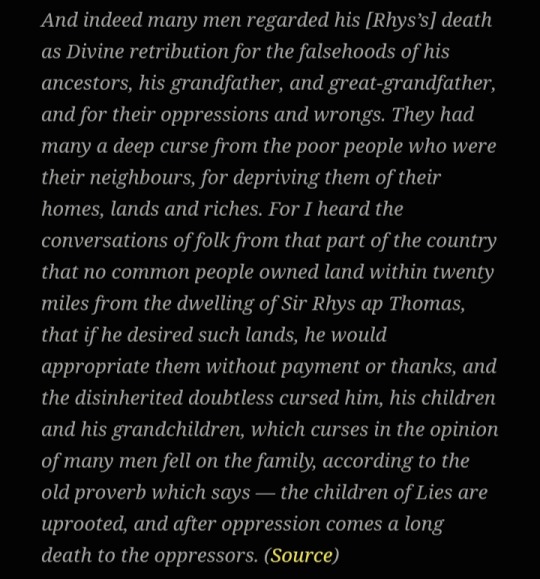
Rhys was beheaded in 1531, but Catherine was in the soup herself after all she'd been up to assisting him.
As Gareth Russell says:
'While we may never know exactly how much his own actions brought about Rhys's death, we can be certain of the devastating effect it had on his widow. She had been intimately involved in her husband's quarrel, and so the possibility that she would be accused of complicity in his alleged treason was tangible.
Left to forge prospects for their three young children — Anne, Thomas and Gruffydd — and fearful for herself, Lady Katherine followed in the footsteps of her elder brother Edmund and flung herself on the mercy of their niece, Anne Boleyn. Once again, the family's dark-eyed golden girl did not disappoint.'
It notable how often you see Anne, and later Elizabeth, willingly pull relatives out of sticky situations, which suggests at least some previous attachment on both sides, as I shouldn't imagine either would be too happy doing it for the more hostile characters.
Compare Katherine's reliance on Anne, a half-niece, to Elizabeth Seymour writing to Cromwell for help, not Jane, her own sister.
'She may even have tried to limit the damage for her aunt and young cousins shortly before Rhys's execution.'
Which was good of Anne considering Rhys had slagged her off, with both of those links having the nerve to imply his death was somehow her doing.
Had he lived, I do wonder if his opposition, compared to Catherine, who, familiarity or not, no doubt wanted to benefit from the connection, would've provoked a certain marital discord.
'Rhys had been attainted at the time of his conviction, meaning that the Crown could seize his goods and property, but his Act of Attainder specifically and unusally made provisions for his widow, who was left with an annual income of about £196.
If Anne could not save Rhys, she worked hard to salvage his family's situation.'
Meaning she got Henry to surrender some of his ill-gotten gains solely to avoid her aunt's destitution, where plenty of other widows and orphans were left to fend for themselves.
Anne also got Catherine a new husband in old-timer Henry Daubeney, but they bloody hated each other and split up soon enough.
According to Eric Ives:
'Over the winter of 1535-6, Katherine Howard, Anne's aunt, was trying to secure a separation from her second husband, Henry, Lord Daubeney. She told Cromwell that the only assistance she was receiving was from the Queen herself, and this despite the strenuous efforts which were being made to destroy her standing with Anne.
The help may have been very practical indeed; Lord Daubeney, who was certainly pleading financial hardship at one stage, reached an amicable agreement with his wife after Anne's father had made available £400.'
Even though this post about Catherine insists neither Anne nor Norfolk gave a toss about her personal woes, from the looks a things Anne was trying to solve this problem too.
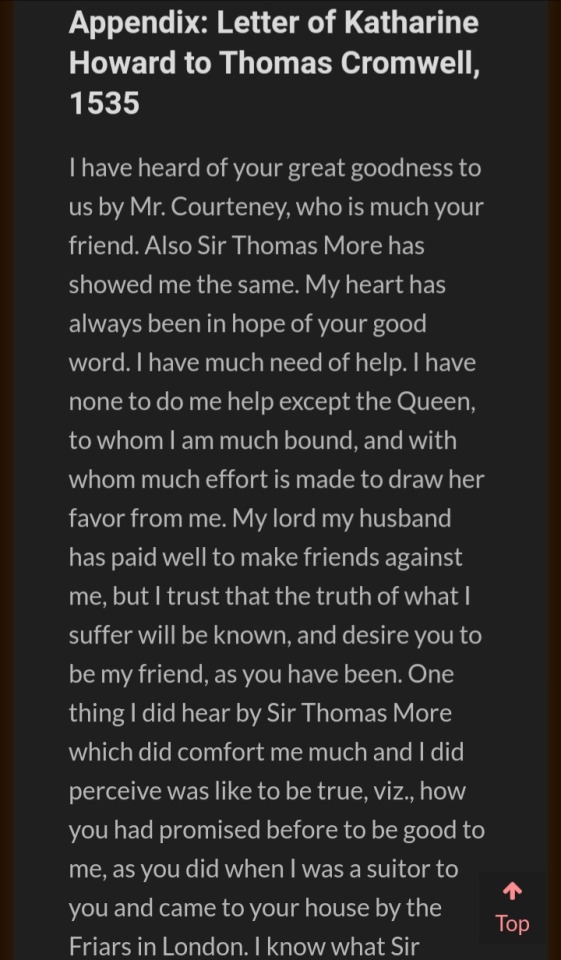
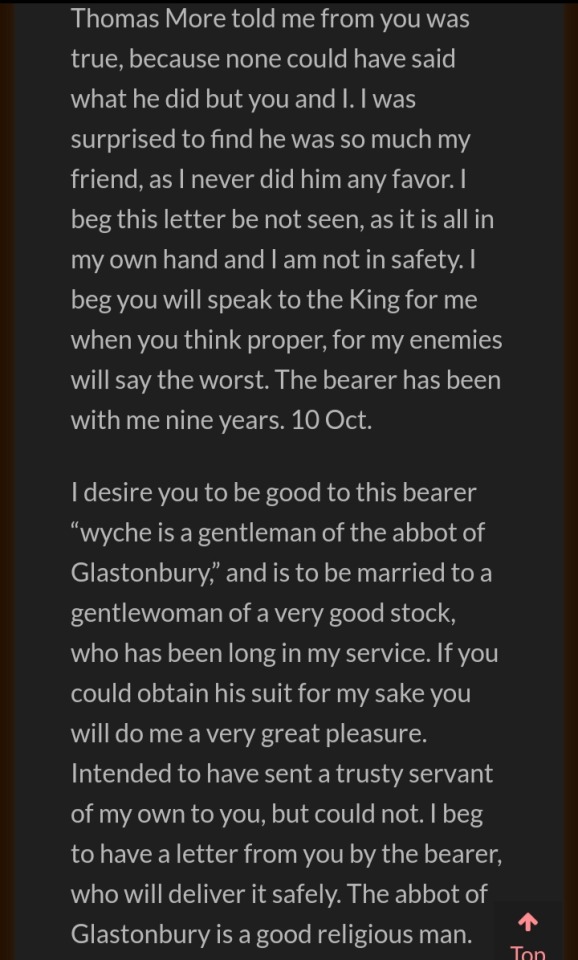
'I have none to do me help except the Queen, to whom I am much bound, and with whom much effort is made to draw her favour from me.
My lord my husband has paid well to make friends against me, but I trust that the truth of what I suffer will be known...'
One wonders how all these paid agitators ended up gathered 'round Anne, nagging or distracting her from Catherine's cause, but evidently she wasn't put off.
Plus, according to that last link, Catherine never learnt her lesson and took part in the Pilgrimage of Grace an' all, raising 3,000 men against Henry!
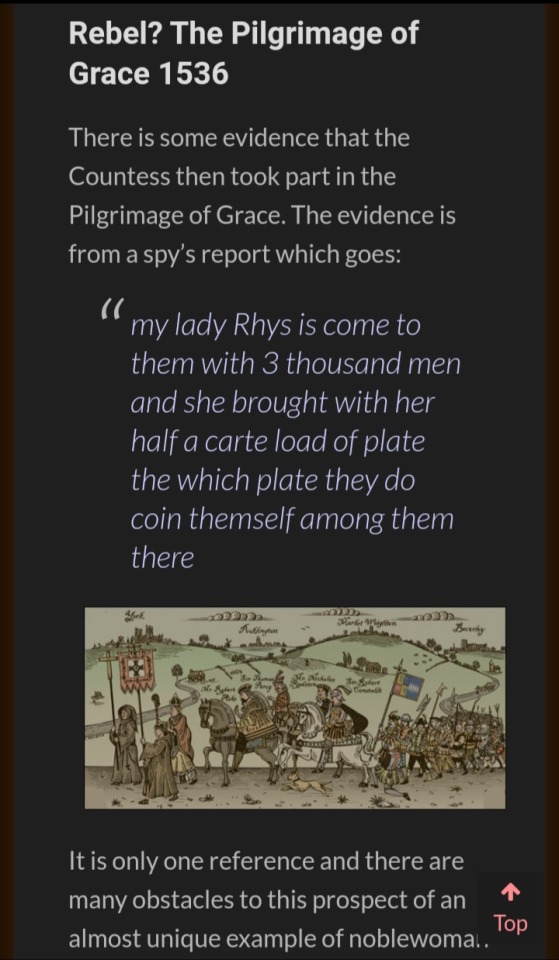
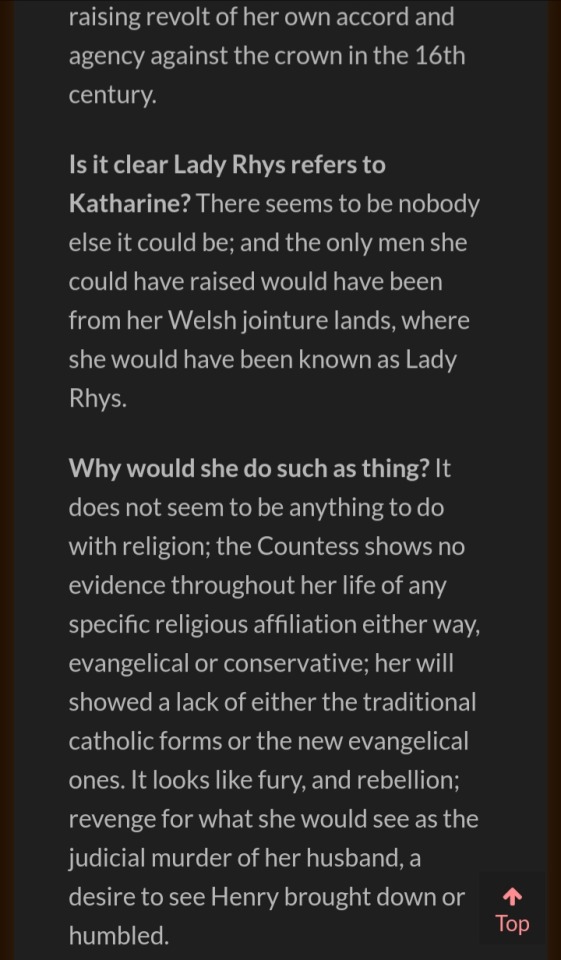

By the sounds of it, this isn't a sudden burst of furious piety at work, rather there's almost an absence of religion in Catherine's life.
The obvious explanation would be yet again wreaking vengeance in Rhys's memory, and that's evident given her long-standing vendetta against his disloyal servants.
But would it be too much to think she was motivated to a certain extent by the death of her niece and nephew, being 'much bound' to the former?
And as she avoided all punishment, the remaining Howards (i.e. Norfolk) had to have covered up for her.
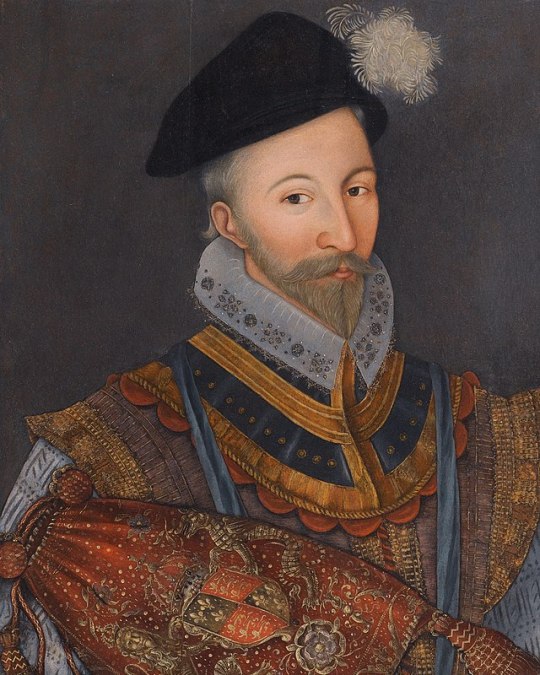
William Howard, 1st Baron Howard of Effingham
In 1529 there was much scrapping over the wardship of the Broughton sisters.
Wolsey ended up with the younger, Katherine, but upon his fall it seems Anne got the girl transferred to the care of Agnes Tilney, who then married her to William, so Anne was responsible for his first marriage.
(Not that it prevented Katherine Broughton from acting, as Ives puts it, as 'ringleader', in a demo for Mary six years later, and getting herself locked up in the Tower as a result, but there you go.)
Given the amount of important roles he enjoyed during Anne's queenship, all whilst barely out of his teens, she must have liked him:
• 1531: Ambassador to Scotland.
• 1532: Travelled to Calais with Anne to meet Francis.
• 1533: Served as Earl Marshal during Anne's coronation, in place of Norfolk.
• 1533: Held the canopy at Elizabeth's christening.
• 1535: Visited Scotland to award the Order of the Garter to James.
• 1536: Went again to Scotland to arrange a meeting between Henry and James.
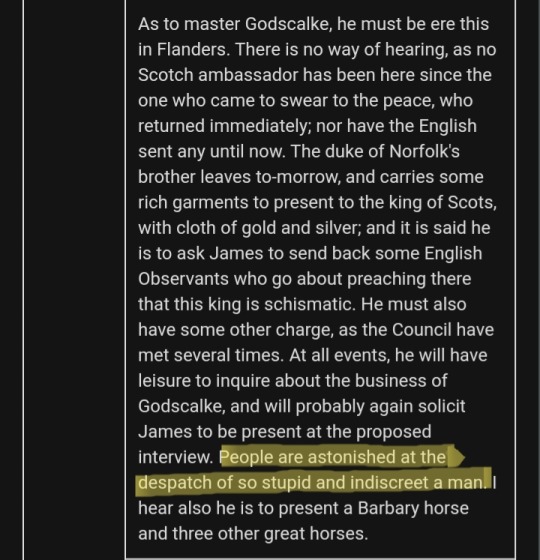
Besides, Chapuys said of him:
'People are astonished at the despatch of so stupid and indiscreet a man.'
So he had to be Anne's friend.
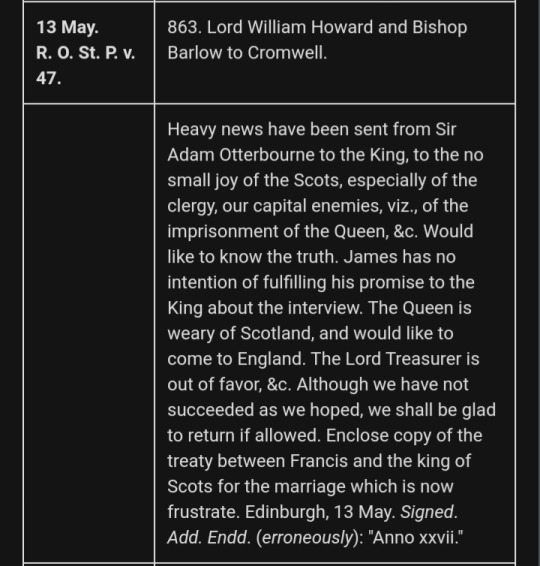
Once he hears of her arrest, William curses it as 'heavy news', demanding to know the truth from Cromwell and resenting all the Scottish clergy as 'capital enemies' for rejoicing in her fall.
Mainly I'm mentioning him to discuss his own character, and where his evident loyalty to other family might give us a further suggestion of his relationship to Anne, and how he kept to that sense of honour even when it led him into dangerous territory.
Consider, for example, how he named his son Charles after his brother, and called his daughter Douglas in honour Margaret Douglas, Charles's wife, thus commemorating their doomed romance.
You'd also be surprised how often he turns up in Young and Damned and Fair, as he appears to have been Katherine's closest uncle, for all that she's usually connected to Norfolk.
Indeed, so deep was he in it Agnes had to be advised not to warn him off coming home, meaning he arrived from France and found himself immediately clapped in the Tower, whereupon he craftily claimed all his best plate was washed overboard so Henry couldn't get at it, which worked.
Later, his connection with Henry Howard ensured he missed out on being Admiral, and when he did get it, Mary took it off him to punish his partiality to Elizabeth.
There's a section here detailing his bond with Elizabeth, where he's credited with saving her life, if you ignore the obvious errors:

I especially like the idea everyone feared William would kidnap Philip!
However, there's a very odd paragraph in his son's Wiki page:

'In 1552, he was sent to France to become well-educated in the French language, but was soon brought back to England at the request of his father because of questionable or unexpected treatment.'
Am I mad or does this imply Charles Howard endured sexual abuse in his teens?
Were it only poor lodgings or sub-standard teaching, he could've moved elsewhere.
Were it excessive beating, you'd expect it to be made plain, not using all this cagey, obfuscating language.
But the thought did lead me to ponder their father-son bond, where Charles, whatever shame he suffered, knew he was loved enough that writing to his father would make it stop.
And William, reading it, rescued him immediately, proving the boy right.
This is a mere fancy of mine, but when it's just after Elizabeth's ordeal, whom he obviously cared so much about, and knowing she could easily have died like Katherine, which happened in part because he never stopped Dereham, one wonders if his moral failing then pushed him to protect Charles and Elizabeth later.

Thomas Howard, 1st Viscount Howard of Bindon
I'm hard-pressed to unearth much information on this lad, but everyone leaves him out so I won't.
There's gotta be some reason Elizabeth ennobled him, and so early on (in 1559) before he'd had the chance to serve her.
It can't just be she looked round the court, noticed he was the last of Norfolk's children, and awarded him for that.
I wish we knew more about Elizabeth's childhood, as in who she met and associated with at court, because you can be certain she met the Howards then.
I also want to add a little about his eldest son, the 2nd Viscount, who was...odd, to say the least:
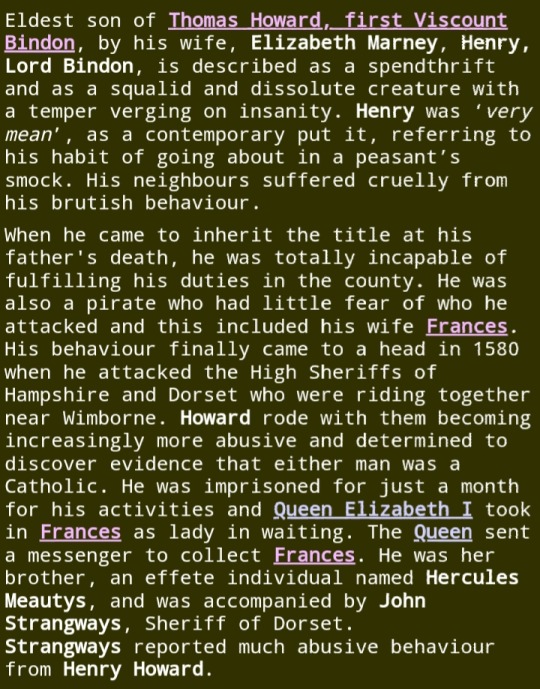
• Being a pirate;
• Dressing as a tramp;
• Beating everyone including his wife.
This gave me the the idea that perhaps his and Norfolk's reputation had somehow been rolled up together over the centuries, where this Henry Howard, although unknown today, was probably infamous in his time, and maybe his behaviour in a sense lended credibility to the accusations of spousal abuse against Norfolk, where people felt Henry 'got it from somewhere'.

When Elizabeth learnt what he was up to, she sent Hercules Meautys (what a name) to rescue his sister, and took Frances in, with her husband dubbing her 'a filthy and porky whore', which was rich coming from him.
And his other son, the 3rd Viscount, killed his own father-in-law and had a long-running feud with Walter Raleigh.
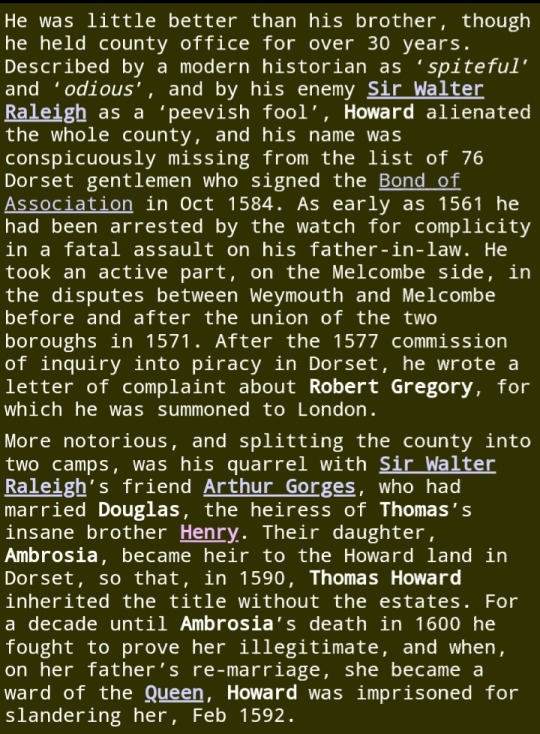
He also spent years trying to have his brother's granddaughter Ambrosia declared a bastard to grab all her land, so Elizabeth locked him up!
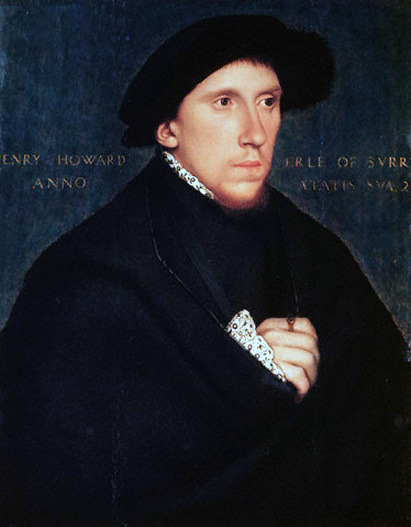
Henry Howard, Earl of Surrey
Anne found Surrey a wife and took him with her to France, where he and FitzRoy remained as honoured guests until the next autumn.
He was then obliged to serve as Earl Marshal as Anne and George were sentenced to death.
Four years later, according to Gareth Russell, Surrey not only watched Cromwell's execution, but gloated about it afterwards:
'Henry Howard, Earl of Surrey, stood at the forefront of the crowd and watched the scene without pity. He was missing his cousin's wedding to be here to see his family's bête noire finished off.
Later that day, he could not conceal his good mood. It felt to him like a settling of scores:
"Now is the false churl dead, so ambitious of others' blood."'
What does this mean?
Who's blood has Cromwell lusted after?
Who did he kill four years ago?
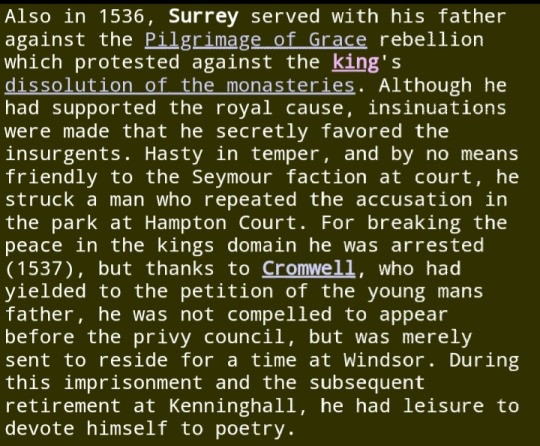
Surrey can't be referring to himself when Cromwell had actually protected him from punishment not long before, which in itself suggests a few interesting things:
• Cromwell was not yet aware of just how much the Howards despised him, as in, up til then his relationship with them was at least civil, cordial even, so the old line about Norfolk begrudging the 'new men' just because they're new men doesn't quite wash.
• This would've the perfect opportunity to bring down a mighty rival, but instead Cromwell felt bizarrely generous and intervened on Surrey's behalf, meaning he saw no harm in preserving the family, and instead thought it useful to get them on side.
• Why does he feel the need to favour the family?
Has he done something to antagonise them?
• The Howards are collectively putting on an Oscar-worthy acting routine of feigned friendliness, or at least indifference to said actions, so Cromwell, whilst he might suspect he's given slight offence, assumes it'll soon be forgotten if he pats them on the head here and there.
• Except whatever Cromwell did, saving Surrey wasn't enough to warrant forgiveness.
And let's examine this quote in detail:
Surrey is at 'the forefront' of spectators, keen to behold Cromwell dying in all its gory brutality, besides opting to watch such a horrendous deed over attending Katherine's wedding.
Instead of a happy celebration of his family's success, something he could've easily enjoyed in the knowledge of Cromwell being dealt with out of the way, he insisted on serving as a witness, as if it wouldn't be over until he'd seen it done, almost to be sure that it had.
For this would 'settle the score', shedding his blood in payback for... what exactly?
Thetford Priory?
Is that all?
Or for the blood Cromwell himself so coveted?
And even the sight of such suffering left Surrey unmoved, ridiculing the dead man not only as a 'churl', but a 'false' one.
False to whom?
'False' as in affecting loyalty to his Queen whilst working to bring her down?
Because is that extreme level of hatred really just supposed to be nothing deeper than empty class prejudice?
Usually, Cromwell's fractious history with the Howards is portrayed as Norfolk's one-man defamation campaign of all-encompassing lordly outrage verging on eye-popping insanity, except Surrey clearly loathed him too.
Perhaps from that we can conclude that Cromwell had become unpopular with the whole family, hence the 'bete noir' reference above.
When Surrey's resentment is remembered, it's conveniently boxed up and filed away as the same-old 'snobbery' of his father, which a very neat, uncomplicated excuse that prevents us looking into it properly.
I daresay Surrey was proud and class-conscious, but wouldn't everyone be like that, to a greater or lesser extent?
Why then is this 'haughtiness' only ever attributed to characters we're supposed to dislike, namely Anne, Norfolk, and occasionally George and Surrey, with the 'good' people somehow immune to such 'base' emotions?
Indeed, I'm starting to wonder how much real evidence there is for this common supposition of arrogance.

As if Surrey's known at all, it's for the manner of his death, namely he 'got himself killed' by 'stupidly' quartering the royal arms with his own, which, whilst a gross oversimplification, nevertheless defines him, where history views his character through this lens and reads his entire life backwards, as if there's no explanation for his behaviour other than he was just born to be a cocksure moron.
It plays upon modern bigotry against aristocrats, where they're all stuck-up, slow-witted inbreds fixated with the pecking order and archiac symbolism, keeping the honest worker down to prove they're better than everyone else, which is a laugh because they're all REALLY shallow, superfluous chuckleheads and deserve what they get.
Since the idea Surrey died for something so 'silly' as what badge went where slots so well into the stereotype, then it's cheapened his reputation overall.
Rather than being highly esteemed as a pioneer of English literature and the forerunner of Shakespeare, he's treated as nothing but a hot-headed toff tripped up by his own idiotic pretensions, with an end offered as a 'fitting' denouement, almost a lesson in morality; about where not 'knowing your place' or 'getting ideas above your station' leads... after vilifying Surrey and Norfolk for apparently demanding people know their place and not get ideas above their station.
Something hypocritical there.
There's also a reflexive judgementalism within this fandom and the lower end of publishing (i.e. novels and pop. history) where it's assumed if Anne or any of her family are executed, then even if they're technically innocent, they must've deserved it really, else 'the universe' wouldn't let it happen.
Therefore, known evidence is read with the most bad-faith interpretation, with any declared slip leapt upon and blown out of proportion, solely to prove their own bias correct.
You're right to think that, you are.
Hating them makes you A Good Person.
Again, this ONLY applies to Anne and her supporters, not her enemies.
No, no. They were martyrs to the Cause.
But I wouldn't say Surrey's usage of royal arms spoke to any pathological sense of superiority, certainly not to the extent it should define his memory.
Heraldry and ancestry is the lifeblood of nobility: everyone he knew fought for whatever their birth and court careers entitled them, so why shouldn't he?
Look at his sister protesting again and again and again for her rights as FitzRoy's widow: does this make her a 'snob' because she never gave up fighting?
In fact, dubbing Cromwell a 'churl' doesn't mean too much either.
The average person objects to someone because they're a thief, cheat, liar, etc. but calling them as much is a toothless insult, as they'd require a sense of honour to feel the sting.
And if they had that, they would've have committed the offence it in the first place.
So, you pick on something they probably are sensitive about, such as status or physical appearance, to get your own back.
Calling Henry VIII, for example, a fat bastard, doesn't mean you oppose him for having a weight problem, or that you dislike fat men generally.
It's that you're hitting 'below the belt' to inflict the worst punishment you can.
Oh yeah, it's petty, but the aggrieved often are.

Surrey's real crime, if we deem it one, was apparently rash language of what vengeance he'd wreak on his foes once the King was gone, meaning the Seymours.
So is it mere coincidence that the main targets of this infamous 'snobbery' are those who caused or benefited from Anne's fall?
Are we to believe his only complaint, right down to twice vetoing Mary Howard's marriage, is nothing better than looking down his nose at humble Seymour origins, for they've done nothing whatsoever to draw his ire?
For all the time I've been reading history, the way the court of 1536 splits between the Boleyns and those pushing Jane Seymour, and then, once the Boleyns are wiped out, it greatest rivalry becomes Howard versus Seymour, one lasting for the remainder of Henry's reign, has always struck me as both telling and appropriate.
The idea the Howards took over hating the Seymours because of their slain family is to me to most obvious explanation; the driving force pushing the enmity beyond a decade, and blaming it all on snooty la-di-da attitudes baffles me.
It's so pat and offhand, as if it was thrown into historical research centuries ago and never questioned, passed down to us as unassailable received wisdom, rendered true from repetition, as no one likes Surrey or Norfolk enough to bother reassessing their motivations.
But could such prolonged open hostility run on no greater impulse than keeping the gentry in check?
Is THAT all?

And do note how leading this narrative is, where, if we accept the Howards despised the Seymours as upstarts, then the fault for all bad blood is immediately shoved onto them and them alone, when those poor Seymour lads, rosy-cheeked and pure of heart, are just doing their best in life, working hard and loving everyone.
But oh! Those nasty Howards bullies are So Mean!
Not once is it reversed, proposing that the Seymours envied the Howards' breeding and birth, vowing to bring them down out of spite.
Instead they're absolved of all guilt in the conflict and justified in everything they do as a self-defence measure, even when they brought about Surrey's death and tried it on ten years previously.
So why on earth should he like them?

How I wish this painting still existed.
Starkey describes Henry Howard thus:
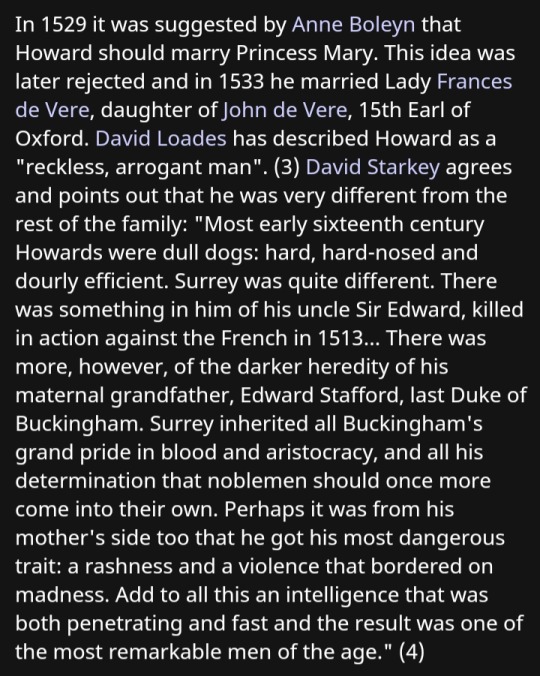
'Surrey inherited all Buckingham's grand pride in blood and aristocracy, and all his determination that noblemen should once more come into their own.
Perhaps it was from his mother's side too that he got his most dangerous trait: a rashness and a violence that bordered on madness.
Add to all this an intelligence that was both penetrating and fast and the result was one of the most remarkable men of the age.'
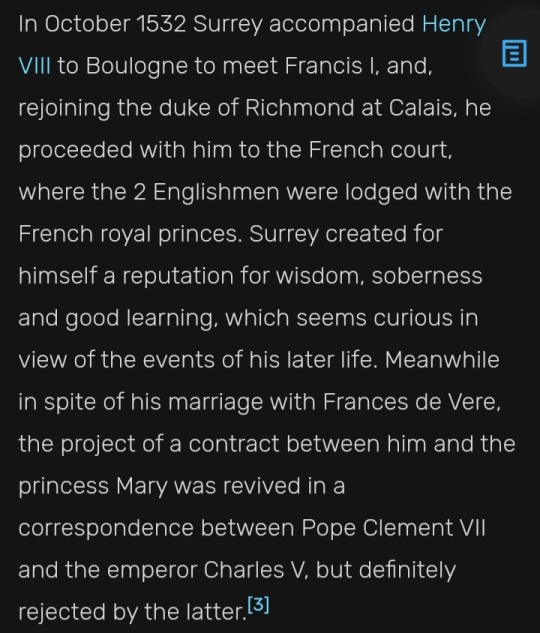
And yet I don't know of any aggressive outbursts prior to 1536, being then known for 'soberness and good learning'.
We tend to class poets of later eras as on the sensitive side, so far from being 'always like that', it may well be that the deaths of George, Anne, FitzRoy and putting down the Pilgrimage of Grace knocked him off the rails, a process then driven beyond all remedy by watching Katherine die and the suicidal shame he endured over his military failures.
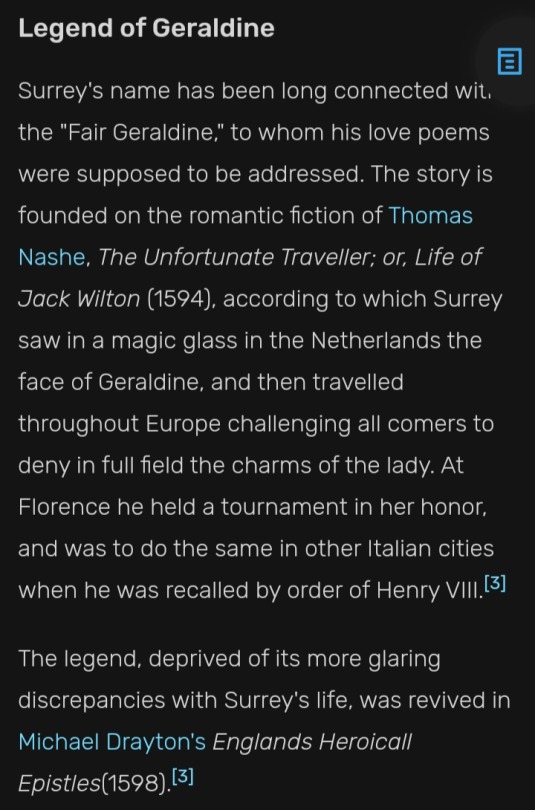
Although I do like the sound of him as the hero of High Fantasy.
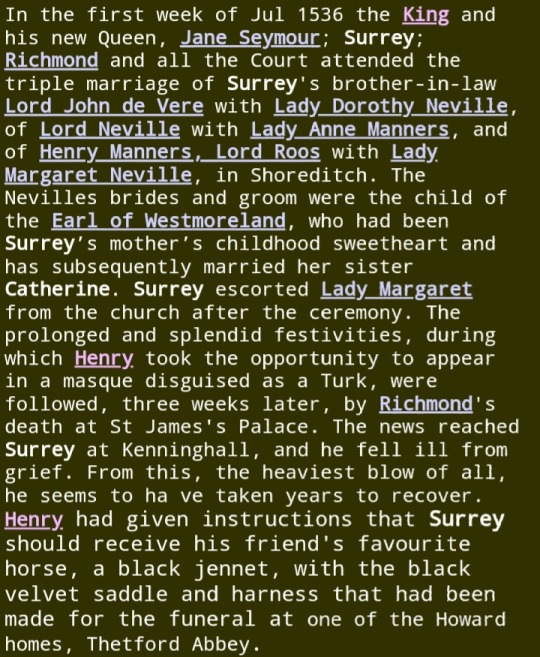
Whilst I'm here, let's look at this very awkward scenario of Surrey attending the triple Neville wedding, being the children of his mother's intended and her sister.
Considering how desperate so many are to clear Henry VIII of Anne's death, protesting how he Genuinely Believed and that makes it alright then, he's cheerful enough fannying about as a Turk less than two months later.
Finally, writing this I read several of Surrey's poems, and must include this truly endearing piece commemorating his wife's love for him:

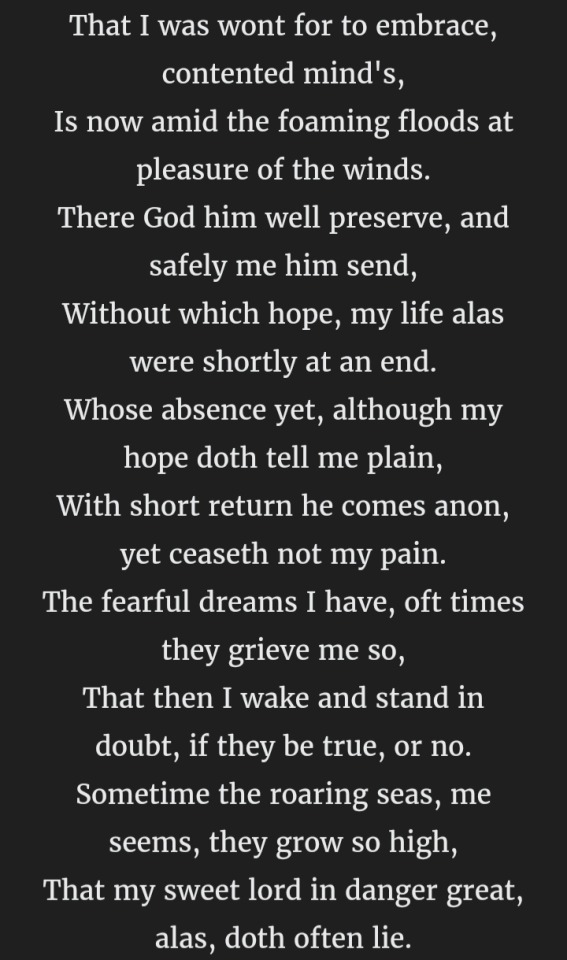
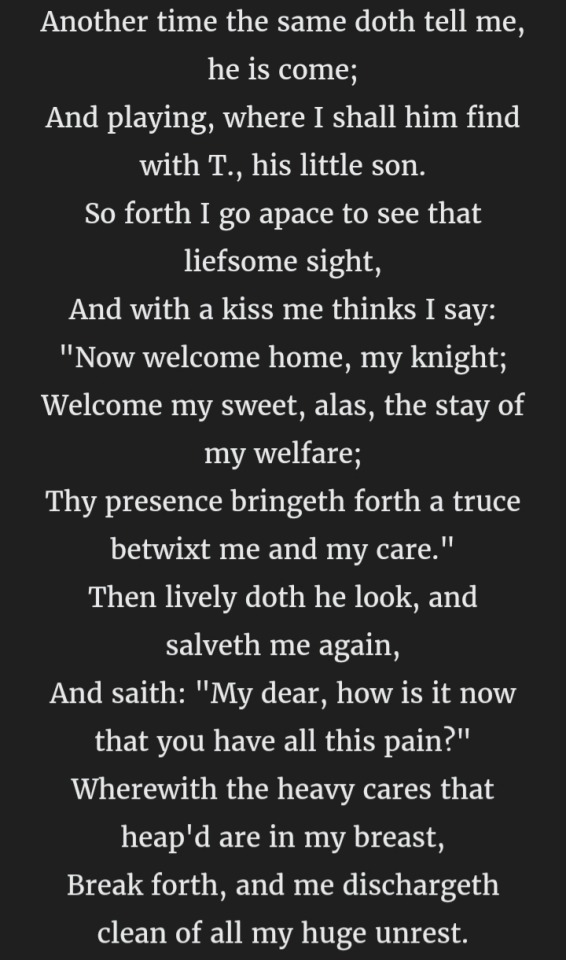
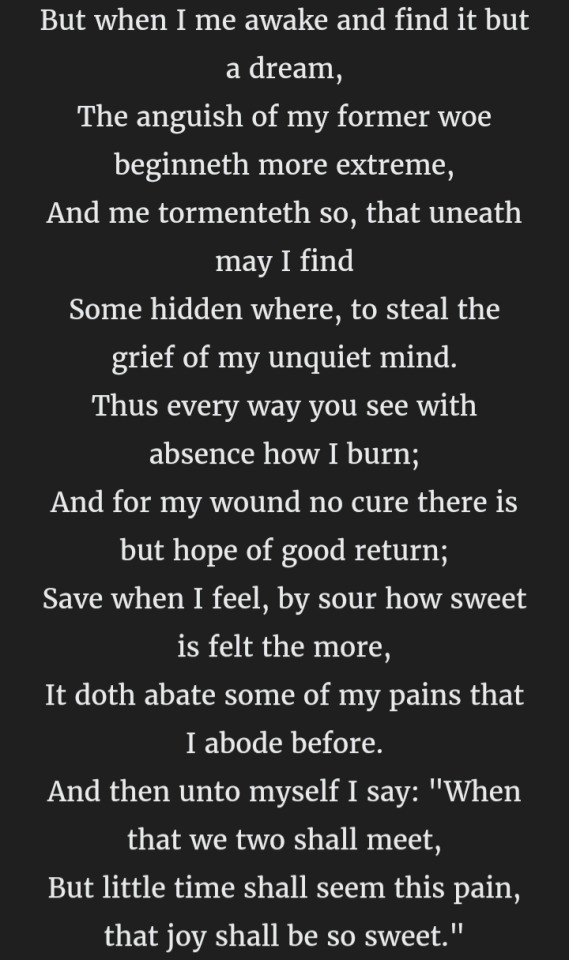
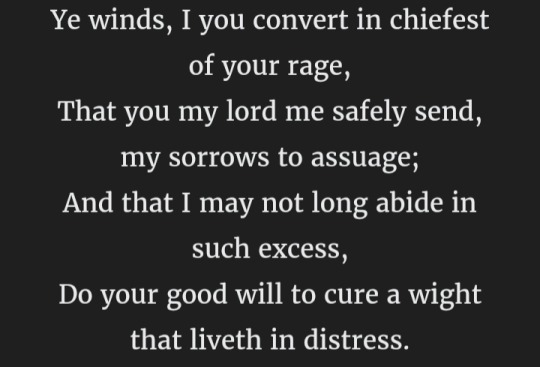
Such a poet, and still no one credits him with any tender emotions.
Anyway, don't mind me but I've hit the picture limit.
I'm not sure when Part Two will be done, but I'll let you know, come the time.
#Henry Howard#Catherine Howard Countess of Bridgewater#William Howard#Thomas Howard 1st Viscount Howard of Bindon#Anne Boleyn#Elizabeth I#Henry Howard 2nd Viscount Howard of Bindon#Thomas Howard 3rd Viscount Howard of Bindon#Frances Meautys#Rhys ap Gruffyd#Thomas Cromwell#Young and Damned and Fair#Gareth Russell#The Life and Death of Anne Boleyn#Eric Ives#David Starkey#Quotes
8 notes
·
View notes
Text
GWENLLIAN FERCH GRUFFYDD // PRINCESS OF DEHEUBARTH
“She was Princess consort of Deheubarth in Wales, and married to Gruffydd ap Rhys, Prince of Deheubarth. Gwenllian’s “patriotic revolt” and subsequent death in battle at Kidwelly Castle contributed to the Great Revolt of 1136.”


2 notes
·
View notes
Text
Heroínas
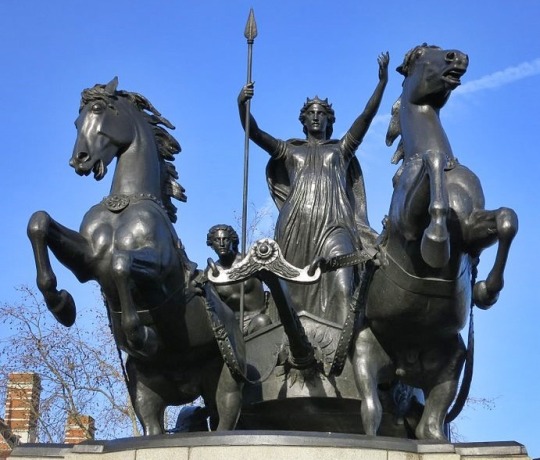
Boudica
Boudica foi rainha da tribo britânica Iceni, que liderou uma revolta fracassada contra as forças do Império Romano em 60 ou 61 d.C.
Boudica era a esposa do rei Prasutagus que governou suas terras como um aliado independente de Roma e que, portanto, deixou sua propriedade dividida entre o imperador Nero e a esposa e duas filhas. Após sua morte, no entanto, as terras icenas foram usurpadas por Roma, Boudica foi açoitada e suas filhas foram estupradas pelos romanos por ousarem presumir que tinham direitos que deveriam ser reconhecidos por Roma.
Boudica rapidamente reuniu sua tribo e atacou três cidades, resultando em mais de 80.000 cidadãos romanos massacrados. Boudica foi derrotada na Batalha de Watling Street em 61 d.C. por Suetônio, que criteriosamente escolheu o local da batalha para favorecer seu menor número.
Uma estátua de Boudica e suas filhas foi concluída em 1905, encomendada pelo príncipe Alberto como presente para a rainha Vitória, admiradora de Boudica. A estátua fica perto da Casa do Parlamento e da Ponte de Westminster, em Londres.
Boudica é considerada uma heroína nacional britânica e um símbolo da luta por justiça e independência.
-> Estátua de Boudica em Londres, Inglaterra
~*~
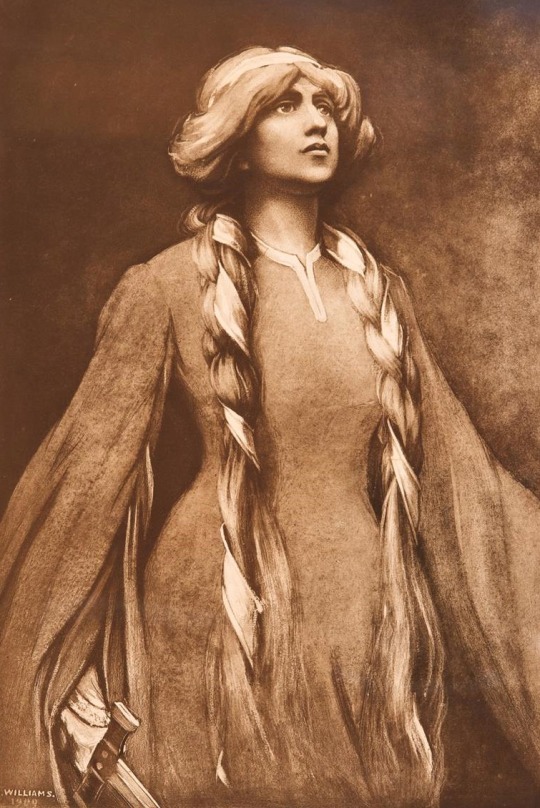
Gwenllian ferch Gruffydd
Gwenllian ferch Gruffydd foi uma princesa galesa que liderou um exército na batalha contra os normandos.
Gwenllian ferch Gruffydd era casada com Gruffydd ap Rhys, Príncipe de Deheubarth. Dizia-se que ela tinha uma grande beleza, era inteligente e bem educada. Gwenllian viveu em tempos conturbados, pois os senhores galeses perderam muitas de suas posses para os normandos após a invasão da Inglaterra por Guilherme, o Conquistador, em 1066. Como havia recebido treinamento militar, Gwenllian lutou ao lado de seu marido. Ela e Gruffydd lideraram ataques a assentamentos estrangeiros tomando bens e dinheiro para redistribuir entre os galeses que foram despossuídos por esses colonizadores, como um par de "Robin Hoods de Gales".
Enquanto seu marido estava em Gwynedd buscando uma aliança com seu pai, os anglo-normandos fizeram ataques e Gwenllian assumiu o comando do exército. Em uma batalha um de seus filhos foi morto e ela e seu outro filho foram capturados e executados. A notícia da morte de Gwenllian e seus filhos enfureceu os senhores galeses, que rapidamente se juntaram à rebelião.
As ações de Gwenllian foram comparadas com as de outra líder celta: Boudica. O campo onde se acredita que a batalha tenha ocorrido, é conhecido como Campo de Gwenllian e por séculos depois, os galeses usaram "Vingança por Gwenllian!" como um grito de guerra
Hoje em dia algumas pessoas acreditam que Gwenllian pode ter sido a autora dos Quatro Ramos dos Mabinogi, as primeiras histórias em prosa na literatura da Grã-Bretanha.
1 note
·
View note
Text
gruffydd ap cynan
a different gruffydd ap cynan who is the first one's great-grandson
gruffydd ap rhys
a different gruffydd ap rhys who is the first one's grandson (it literally goes rhys-gruffydd-rhys-gruffydd)
gruffydd ap llywelyn
gruffydd ap maredudd, who is gruffydd ap llywelyn's grandson
a different gruffydd ap maredudd who i don't think is closely related to him. but is the nephew of the second gruffydd ap rhys
gruffydd ap rhydderch. who is not related to any of them except that his great great granddaughter eventually married gruffydd ap maredudd (the second one)
that's assuming I am even reading this diagram correctly
the worst thing about medieval Wales is how everyone has the same name. there are eight people called gruffudd in this one diagram* i'm looking at and they're all within about a hundred years of each other. get more names!!!
*sort of a family tree? but some parts of it are fairly tangentially connected
14 notes
·
View notes
Text
RHYS AP GRUFFUDD
Prince of Deheubarth
"THE LORD RHYS"
(born circa 1132 - died 1197)

pictured above is an imagined portrait of the Prince of Deheubarth, painted by Jean Pierre Victor Dartiguenave circa 1870
-------------------- ~ -------------------- ~ --------------------
RHYS was born around 1132, on an unrecorded location, probably in the Kingdom/Principality of Deheubarth, modern-day Wales in the United Kingdom.
As one of the sons of Gruffudd ap Rhys and Gwenllian ferch Gruffudd, he was a member of the HOUSE OF DINEFWR. He was named RHYS AP GRUFFUDD, meaning Rhys son of Gruffudd, following Welsh tradition.
Before he was born, his family had lost the Kingdom of Deheubarth to the English. And, at the time of his birth, even though his father had control over a small portion of Deheubarth known as Cantref Mawr, the territories were under Norman rule.
Sources and historians diverge on the definition of Deheubarth since the Norman invasion. Some call it a Principality and others a Kingdom.
By 1135, his father took advantage of the death of Henri I, King of the English, to take control as the rightful King of Deheubarth.

pictured above is the coat of arms of the Kingdom/Principality of Deheubarth
Both of his parents died when he was young. As the Welsh continued to fight the Norman Lords, his mother died while leading an army during the Great Revolt of 1136, while his father was killed in 1137. So he was probably orphaned before his 5th birthday.
What was left of Deheubarth was inherited by his eldest brother, Anarawd ap Gruffudd, an illegitimate son of his father who became the new Prince/King of Deheubarth.
In 1143, when his eldest brother was killed, another of his illegitimate brothers, Cadell ap Gruffudd, became the new Prince/King of Deheubarth.
Nothing is known of his childhood. The first time he was recorded was in 1146, aged around 14 years old, fighting over Llansteffan Castle, alongside his brothers.
His brother Prince/King Cadell suffered an attack in 1143, barely surviving, and decided to abdicate and leave the country. Deheubarth was left to him and another of his older brothers, Maredudd, the only legitimate surviving sons of his father.
So, from the age of about 21, he ruled as joint Prince/King of Deheubarth until the death of his brother around 1155-57, becoming the only PRINCE/KING OF DEHEUBARTH.
At some point around these events, he married GWENLLIAN FERCH MADOG, a daughter of Madog ap Maredudd, Prince of Powys, and Siwsana ferch Gruffudd. With his wife, he had at least eleven children. But he also had illegitimate children.
Check a list of his legitimate and illegitimate children at the end of this post!
Henri II, King of the English, invaded Wales in 1157, starting with the Kingdom of Gwynedd. Before the English invaded Deheubarth, he tried to negotiate an agreement but was forced to give up almost all of Deheubarth.
Over the next years, he fought the English but was not successful. At some point, he had to give his sons as hostages and was also taken hostage himself, only to being freed and having to pay homage to the King of England.
Between 1164-70, he united with other Welsh Princes, from Gwynedd and Powys, in an uprising against the English. At that time, one of his sons was blinded by order of King Henri II.
Following the death of his maternal uncle, Owain "Gwynedd," Prince of Gwynedd, in 1069, he became the leader of the Welsh Princes against the English.
He made peace with King Henri II in the early 1170s, even sending help to stop a rebellion of the sons of the King around 1173/74.
During a council in Oxford, in 1177, he and other Welsh Princes held homage to the English King. And, he received the territory of Meirionnydd, part of the Kingdom of Gwynedd.
Amidst the peace years, he rebuilt Cardigan Castle in Ceredigion, in stone, and founded Talley Abbey in Carmarthenshire.
However, when King Henri II died in 1189, he considered that the truce with the English had ended and began to attack the Norman Lords again. Even though the successor, King Richard I and his brother Jehan "Lackland" tried to make peace again.
Meanwhile, his own sons started to rebel, as some supported Norman Lords that were related to them by marriage. So, he ended up imprisoning some of them along the 1190s.
The Prince of Deheubarth died excommunicated in 1197. Though the place of his death was not recorded, it was likely in the Principality of Deheubarth. He was circa 65 years old when he died.
-------------------- ~ -------------------- ~ --------------------
To succeed him as ruler of Deheubarth, he chose his eldest son Gruffudd ap Rhys II. But Maelgwn, another of his sons, refused to accept, and the brothers fought over the inheritance until the death of Gruffudd in 1201.
Llywelyn "the Great," Prince of Gwynedd, divided the remainder of Deheubarth in 1216. And, following the English conquest over Wales, Deheubarth was completely dismantled by 1284.
Through his daughter Gwenllian, he is an ancestor of the House of Tudor, and therefore, he is an ancestor of Charles III, the current Monarch of the United Kingdom.
-------------------- ~ -------------------- ~ --------------------
RHYS and his wife, GWENLLIAN, had eleven known children.
Gruffudd ap Rhys II, Prince of Deheubarth - married to Maud de Braose;
Maredudd ap Rhys - married to an unknown woman;
Cynwrig ap Rhys - probably unmarried;
Rhys "Gryg" ap Rhys - married first to an unknown woman, and possibly second to Maud de Clare;
Maredudd ap Rhys, Lord of Cantref Bychan - probably unmarried;
Maelgwn ap Rhys, Prince of Deheubarth - married;
Hywel "Sais" ap Rhys - possibly married;
Maredudd ap Rhys, Archdeacon of Cardigan - unmarried;
Gwenllian ferch Rhys - married to Ednyfed "Fychan" ap Cynwrig;
Morgan ap Rhys - nothing is known about his life; and
Nest ferch Rhys - possibly married to Rhodri ap Owain "Gwynedd," Lord of Anglesey.
And, he also had illegitimate children.
With an unknown woman:
a daughter - married to Einon "Clud" of Elvael; and
another daughter - married to Einon ap Rhys of Gwerthrynion.
With one of his nieces:
Meurug ap Rhys - nothing is known about his life.
-------------------- ~ -------------------- ~ --------------------
COLLECTION: Descendants of the Kings of the Britons - #DotKotB
In a span of four generations, Rhys ap Gruffudd, Prince of Deheubarth, was related to the Kings of the Britons through the paternal family of his wife.
His wife was Gwenllian ferch Madog;
Her father was Madog ap Maredudd, Prince of Powys;
Her grandfather was Maredudd ap Bleddyn, Prince of Powys; and
Her great-grandfather was Bleddyn ap Cynfyn, King of Gwynedd and Powys - a King of the Britons in the 11th century.
But he was himself a more distant descendant of the Kings of the Britons through the maternal family of his father.
His father was Gruffudd ap Rhys, King of Deheubarth;
His grandmother was Gwladus ferch Rhiwallon;
His great-grandfather was Rhiwallon ap Cynfyn, King of Powys;
His 2x-great-grandmother was Angharad ferch Maredudd; and
His 3x-great-grandfather was Maredudd ap Owain, King of Gwynedd, Deheubarth, and Powys - a King of the Britons in the 10th century.
#rhys ap gruffudd#rhys ap gruffydd#prince of deheubarth#dinefwr#welsh royals#welsh royalty#british royals#british royalty#monarchy#monarchies#royals#royalty#royal history#welsh history#british history#history#history lover#history with laura#middle ages#the anarchy#DotKotB
29 notes
·
View notes
Text
Going West: A Wounded Church
Going West: A Wounded Church

I had barely raised the camera to start photographing the interior of the great cathedral at St Davids before a gentleman approached and told me that I could not… or, at least, not without paying for a permit. Now, I know that these ancient churches cost a good deal to keep standing and pay for their conservation, but I have a problem with those that demand exorbitant entry fees before forcing a…
View On WordPress
#Celtic Christianity#Geraldus Cambriensis#Life#Norman Cathedral#pembrokeshire#Rhys ap Gruffydd#sacred sites#Silent Eye 2016 Workshop#spirituality#St David&039;s#The Silent Eye
0 notes
Photo
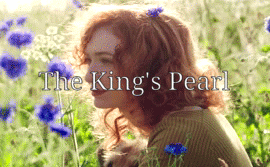




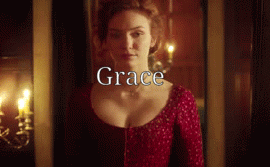
MARY: SERIES ONE
When King Henry VIII announces his daughter unable to inherit the crown of England, Princess Mary Tudor and her friends at court rebel and conspire against him.
An imagined six episode psychological drama series, focusing on Princess Mary Tudor and the intrigues, secrets and lies of Henry VIII’s court...
THE KING’S PEARL
Princess Mary Tudor, Princess of Wales and heir to the throne of England, is at her court in the Welsh Marches. Rhys ap Gruffydd kneels in irons before her; he has been arrested for inciting rebellion and is on the way to the Tower of London. Rhys petitions Mary for help in getting his grandfather’s lands and titles restored to him, as they are his by right and not her stewards, who has been gifted them by the king. Rhys says surely Mary knows what it is like to have an inheritance threatened. Mary promises to help him when she returns to court. Rhys thanks his princess, stating that though his wife is related to the king’s mistress, Anne Boleyn will never be Rhys’ queen.
Mary returns to court for Christmas. All along the streets nobles and peasants alike cheer for their princess before she is welcomed lovingly by her parents King Henry VIII and Queen Katherine of Aragon.
There is a grand feast; Mary reunites with her father’s cousin Henry Courtenay and his wife Gertrude, one of Katherine’s ladies. She dances with the courtier Nicholas Carew while her parents watch proudly.
Mary petitions her father to release Rhys from imprisonment in the Tower. The king, delighted to have his pearl back, agrees, but refuses to grant him his grandfather’s lands and titles. The pair decide to go riding together.
On their return, Gertrude escorts Mary to see her mother. She tells Mary her father’s mistress, Anne Boleyn, has just arrived back at court. Katherine introduces Mary to Eustace Chapuys, ambassador to Mary’s cousin Charles V, Holy Roman Emperor. Chapuys promises he will do his best to help her and her mother. Katherine and Chapuys reveal Pope Clement has forbidden the king from marrying Anne, threatening him with excommunication from the church if he does.
After Mass, where the royal family pray together, a freed Rhys seeks out Mary. He thanks her for his release and attempting to get his inheritance back.
Mary goes to her father’s chambers, where Thomas Cromwell introduces himself as King Henry’s new minister. Mary asks where her father is. When Cromwell replies he is with Anne Boleyn, Mary leaves for the sanctuary of her mother’s rooms.
Henry Courtenay arrives from parliament, telling Katherine, Mary and Gertrude that the king has now declared himself the Supreme Head of the Church of England. Gertrude tells them she heard of a nun in Kent who can predict the future. Katherine warns her not to do anything foolish.
On Saint David’s Day, the patron saint of Wales, Mary is given a Welsh leek by the king’s gentlemen pensioners in a grand ceremony. She is watched by a crowd of courtiers and Chapuys, who compliments her. They talk for a while before she leaves.
Exiting, Mary comes across Anne Boleyn. They glare at each other before Anne reluctantly sinks into a curtsey. Mary ignores her.
Mary plays the virginals for her parents. Despite their praise, there is obvious tension between the pair.
At nightfall Mary and her father talk. Mary is confused how he has declared himself the head of a church that doesn’t exist. Henry says she is clever; one day his pearl will understand. After he has left, Mary tells her governess, Margaret Pole, that she doesn’t think she will ever understand.
Katherine worries when Margaret wakes her in the night to inform her Mary is ill. Gertrude brings up the Nun of Kent again, but Maria Willoughby and Jane Seymour shush her. Katherine goes to help Margaret care for Mary. As Mary continues to vomit, Katherine strokes her daughter’s hair, clutching her necklace which she believes contains a piece of the True Cross. She prays her daughter will get better, comforting her with old stories of her and King Henry when they were younger.
In the morning a recovered Mary wakes to six luxurious new dresses, a gift from her father. She immediately puts one on.
At breakfast, the queen is sat at the table alone. The king left them earlier in the morning to go on summer progress with Anne Boleyn, forcing most of the courtiers to go with them, including the Courtenay’s. Katherine smiles and tells Mary they can still have a good time, just the two of them and their households.
Reginald, the son of Margaret, is sent money by the king to study in Padua. Katherine and Margaret are hopeful Reginald will convince King Henry to recant his decision to break from Rome and marry a heretic. Reginald promises he will. Mary hugs her cousin goodbye, wishing him well.
At court, Chapuys watches on with Nicholas Carew and an incensed Gertrude and Henry as Anne Boleyn takes the queen’s role at a feast. While talking, Rhys Gruffydd is publicly re-arrested for encouraging Wales to rebel against the king, and supposedly taking the title of Prince of Wales. The group disbelieve this after what Mary did for him.
Katherine hears from Maria that Rhys has been beheaded, but she is determined to protect her daughter and keeps the news a secret.
Mary and Katherine go hawking, but on their return are sent orders to separate. Katherine promises she will see Mary soon, encouraging her to stay strong. Any bastard born of Anne Boleyn will never rule; Mary is the heir and future queen of England.
PRINCESS OF WALES
Mary and her tutor Richard Featherstone are having a Latin lesson on Utopia by Sir Thomas More. In the book women are encouraged to fight in battle; Mary tells the priest she would if she could.
Mary is walking in the fields with her ladies, Susan Clarencius and Anne Hussey, and her cousin Margaret Douglas. Her and Margaret’s cousin Frances Brandon has recently married Henry Grey. Mary is betrothed to the French Dauphin, but she has heard no news lately of a marriage... she is surprised to come across her father, riding with Nicholas. He asks how she is and Mary replies she is well, but missing her mother now she has seen him. The king is going to Calais with Anne Boleyn, now the marquess of Pembroke, but promises to see her more often when he returns.
Gertrude sees the Nun of Kent in disguise, switching clothes with her maid. Amazed at her trance, she invites the woman, Elizabeth Barton, to her house.
Mary is having her breakfast served by her friend Henry Jerningham when she is informed by her chamberlain that her father has, with the blessing of the new Archbishop of Canterbury, Thomas Cranmer, married Anne Boleyn. John Hussey asks for a verbal response to the news for the king, but Mary ignores him entirely, continuing to talk with Henry and her ladies. Uncomfortable, he carries on with his orders; Mary is forbidden from writing to her mother and he must take Mary’s jewels. Margaret refuses to give them up to John unless she has a direct order from the king.
Gertrude welcomes Elizabeth warmly, asking about her prophecies. The nun says there may be war now the king has married Anne Boleyn; Gertrude asks her to pray her husband will remain safe. It grieves him that men of noble blood are being dismissed from the privy chamber, with the king ruled by Cromwell who is the son of a blacksmith.
That night, Gertrude tells Henry about the nun’s visit, telling him the king will flee the realm one day. Henry is horrified at her listening to the prophecies, potentially earning the wrath of his cousin when he finds out. He demands she tell the king.
Mary and Margaret Douglas are informed by Margaret that their aunt Mary has died. The pair worry over Frances, but Margaret tells them she has a husband to comfort her now. Mary fears the French accepting Anne Boleyn as queen means her betrothal will be void. The three are interrupted by Mary’s servant Randall Dodd, who delivers a letter passed on by her mother’s servant Anthony. Katherine writes she has “heard such tidings today that I do perceive if it be true, the time is come that Almighty God will prove you; and I am very glad of it, for I trust He doth handle you with a good love [...] But one thing I especially desire you, for the love that you do owe unto God and unto me, to keep your heart with a chaste mind, and your body from all ill and wanton company, not thinking or desiring any husband for Christ’s passion; neither determine yourself to any manner of living till this troublesome time be past.”
Shortly after there is an official command from King Henry to take Mary’s jewels. Her personal arms are stripped from her and her household is to be reduced, with some servants, including Randall Dodd, sent to wait on her new sister Elizabeth, whose christening John Hussey must attend.
King Henry confronts Gertrude, informing her that he knows she has visited the Nun of Kent. She petitions King Henry to forgive her, blaming her womanly foolishness. He does, and orders his cousin to as well. To show his goodwill towards her, Gertrude is bestowed the honour of becoming Princess Elizabeth’s godmother, but an annoyed Gertrude sees it as an insult.
Mary is playing a card game with her ladies and Henry Jerningham when John returns from the christening and tells Mary she is longer a princess. Mary refuses to accept it and writes to her father, believing he was “not privy to it, not doubting but you take me for your lawful daughter, born in true matrimony.”
In response to her letter the Duke of Norfolk comes to dissemble all her household; Mary is to go to Hatfield to serve her sister Elizabeth, the Princess of Wales. Mary says that title belongs to her by right, and no one else.
Mary is only allowed to take one lady in waiting with her and chooses Susan. Her cousin Margaret Douglas is to serve the new queen. Margaret offers to serve Mary at her own expense, but Norfolk refuses. Mary has an emotional goodbye with her staff. Margaret urges her to remember her grandmother had been declared a bastard before becoming queen of England.
On the way to Hatfield, one of the men escorting Mary whispers she must hold firm, for the sake of England.
Arriving, Norfolk asks if she will pay her respects to the Princess of Wales. Mary replies she knows of no other princess in England except herself. The daughter of the marquess of Pembroke has no such title - but if her father acknowledges her as his own, she will call her sister as she calls Henry Fitzroy brother.
As he leaves, Norfolk asks if can take a message to the king. Mary says to tell him his daughter, the Princess of Wales, begs for his blessing. When Norfolk refuses, Mary tells him curtly he might leave it then, and to go away and leave her alone. She retires to her bedchamber to cry.
UNBRIDLED BLOOD
Mary refuses to pay court to Elizabeth unless made to by force. When walking, she is always far in front or far behind the newborn, never at her side. She eats in her own rooms with food Susan steals from the kitchens, avoiding the public table. She has outgrown the ornate dresses her father gave her.
An outraged Gertrude shows Chapuys the letter she has received from the king, telling his subjects that they ought to thank God for giving them a lawful heir. Chapuys reveals he has already sent a Latin declaration for Katherine to sign and pass along to her daughter.
The king arrives to visit his youngest daughter. Mary is desperate to see her father, but is visited by Norfolk and Cromwell. They urge her to renounce her title, but Mary says it is labour wasted to press her; they are deceived if they think bad treatment, rudeness, or even the chance of death would make her change her determination. She asks to see her father and kiss his hand, but is refused. When they leave, she runs to the terrace at the top of the house and kneels in mercy. The king bows and doffs his cap, as do the men with him, before leaving.
The Oath of Supremacy and 1534 Act of Succession are both implemented, making Henry VIII Head of the Church of England, and Elizabeth and any other children of Anne Boleyn his heirs. The Courtenay’s are annoyed as queen Anne flaunts her belly; she is pregnant again.
Mary receives a letter from her mother, which comforts and encourages her, along with the Latin declaration Chapuys spoke of that denies her illegitimacy. She signs it and Susan smuggles it out of Hatfield back to Chapuys.
John Hussey and his wife Anne are returning home now Mary’s household has been dissolved, but before they go John talks with the Courtenay’s and Chapuys about the possibility of the emperor invading in support of his cousin’s rights. Chapuys says he is trying hard to convince his master. Henry says he wishes he had the opportunity to shed blood in the service of Katherine and Mary. John replies he could easily rise the north of England to help Princess Mary, and “the insurrection of the people would be joined immediately by the nobility and the clergy”. Gertrude reminds them of the prophecies of the Nun of Kent; perhaps there will be war over this...
When moving households, Mary refuses to share a litter with Elizabeth and is forcibly put in by guards. Roughly manhandled, she shouts a public protest to some peasants who salute and cheer her as princess. Her new caretaker, Anne Shelton, warns Mary her niece queen Anne has ordered her to box Mary’s ears as a cursed bastard when she uses the title of Princess.
After Gertrude informs him of Mary’s abuse, Nicholas pays the king’s fool to insult queen Anne and princess Elizabeth. The king is furious, banishing the jester from court, but Nicholas shelters him in his own home.
A badly bruised Mary hears of Nicholas’ actions and sends a letter of thanks to him via Susan. Shelton summons Mary to visit her, questioning why she has received a letter from Elizabeth Carew, Nicholas’ wife. Elizabeth urges her to submit to the king for the passion of Christ, otherwise she will be undone. Mary pleads ignorance and throws the letter in the fireplace.
As they watch queen Anne and her uncle Norfolk prepare to visit Elizabeth, Jane Seymour tells the Courtenay’s that the queen has had a miscarriage. They fear how she will treat Mary.
As punishment for the litter incident, Norfolk takes Mary’s remaining jewels. He mocks a brooch from her childhood spelling out the Emperor. Mary is furious, even more so when Anne visits her, urging her to honour her as queen and she will reconcile her to her father. Mary says she knows of no queen of England but her mother - but if her father’s mistress would intercede on her behalf, she would be much obliged. An enraged Anne storms out, swearing to bring down her unbridled Spanish blood.
Shelton tells Mary if she were the king she would kick her out of the house for disobedience, and that the king said she will lose her head for breaking the law and not renouncing her title. Seeing Richard Featherstone preparing to leave in the retinue of queen Anne, a quick witted Mary asks him if she can practise her Latin. The people around them do not understand as she asks if the rumours are true and she is to be killed. Richard is shocked, saying it is not good Latin before leaving with the rest of Anne’s entourage. Returning to London, he immediately informs Chapuys of the danger Mary is in. The ambassador is determined to find a way to see her.
The Nun of Kent is publicly executed, with her head put on a spike on London Bridge. After, the king tells Henry the trust his daughter has in the emperor makes her obstinate, but he fears no one if his vassals stay loyal. He warns his cousin not to trip lest he lose his head.
WORST ENEMY IN THE WORLD
After she was forced into a litter, Mary asks to ride on her horse when moving households. As soon as she is mounted, she races ahead of her sister’s litter, riding across the countryside to the waiting river barge. Exhilarated by the freedom of her ride, she beats the rest of the household there and takes the place of honour. On the riverbank, Chapuys watches on as Mary sails past. They smile at each other, reassured.
Shelton wonders how the ambassador knew they would be there. Suspecting Susan of sending messages in and out of the household, she dismisses Mary’s last lady. Mary is completely alone.
Months have passed; it is now winter. King Henry remains furious at his daughter’s continued defiance, telling his cousin Mary will be an example to show that no one ought to disobey the laws; at the beginning of his reign he was as gentle as a lamb, and by the end he will be worse than a lion. Henry tells his wife.
Gertrude disguises herself to visit Chapuys, saying after the next parliament Mary and Katherine will die. She swears it is as true as the Gospel. Gertrude is adamant they must do something to help save their princess. Chapuys says Katherine spoke to him of Mary marrying Reginald Pole and uniting their claims to the throne. The emperor is busy taking Tunis, but Chapuys believes only a small army sent by Charles V with Reginald amongst the troops would be enough to make people declare for Mary. Gertrude pledges the support of her relatives, but says they need a quicker solution.
Mary is no longer allowed to eat in her room, but she refuses to eat at the main table and submit to a lower rank then her sister Elizabeth, now a toddler at the head of the table. She is slowly starving.
After seeing the king talking with Jane Seymour, Gertrude has an idea. She tries to convince Jane to attract the king’s attentions in the hope of getting better treatment for Mary but a haughty Jane refuses.
Mary is constantly belittled by servants, who say the world will be at peace when they are discharged of the pain and trouble she gives them. She is incensed to hear the French ambassadors are to visit Elizabeth in the hopes of a betrothal. She declares she is the Dauphin’s future wife, not her bastard sister. Shelton orders her to her room, and when Mary refuses she is locked in by force.
The next morning, a weak Mary discovers she has started her period. Disoriented, she calls out for her mother and Margaret. While getting up, she collapses.
Shelton weeps, fearing people will think she has poisoned Mary. She tells a bedridden Mary the king will not see her until she admits to being a bastard. He believes she is his worst enemy in the world. Mary sobs but refuses to give in, saying God has not blinded her to confess her father and mother had lived in adultery and made her a bastard.
Chapuys talks to Cromwell and then the king, trying to convince them to let Katherine tend to her daughter. Henry refuses; if mother and daughter are together, Katherine might “raise a number of men and make war, as boldly as did queen Isabella her mother.” He also refuses to send Margaret Pole, who Chapuys calls Mary’s second mother, as she is a fool of no experience. If Mary had been in her care she would have died, but Shelton is an expert in female complaints.
After queen Anne shows no sympathy for a grievously ill Mary, Jane agrees to help Gertrude.
Mary is examined by a doctor. She fainted due to her heavy period, in addition to not eating or drinking enough. She is suffering from sorrow. The doctor orders her to eat more and recommends being moved closer to her mother to improve her spirits. Mary knows it will never happen.
Shelton reveals Sir Thomas More and several monks have been executed for refusing to take the Oath of Supremacy, and Richard Featherstone is now imprisoned in the Tower. She tells Mary to take warning by their fate. Servants openly desire her death, especially now the queen is pregnant again with what is sure to be a son. Mary notices her old servant Randall Dodd does not join in their bullying. Cornering him in private, she convinces him to deliver a letter to Chapuys.
Gertrude leads Jane to Nicholas, and the pair coach her on how to act. Nicholas tell Jane she must by no means comply with any of the King's wishes, except marriage.
Mary watches out of the window as armed guards are stationed at the gates. Randall walks through them, carrying a letter for Charles V urging the emperor to invade. Mary tells him “In the name of the Queen, my mother, and mine, for the honour of God take this matter in hand, and provide a remedy for the affairs of this country; begging you in the meantime not to forget to solicit permission for me to live with my mother.”
MONSTER IN NATURE
Chapuys visits a mortally ill Katherine. She worries over her daughter, but he promises to look after her. After Maria Willoughby arrives she is no longer alone and begs Chapuys to go and protect Mary.
Mary is summoned to see Shelton, who informs her of her mother’s death. She is devastated. Shelton implores her to submit, saying she will not receive the necklace her mother left her in her will. Mary replies she would rather die a hundred times than change her opinion, before going to her bedchamber to cry.
Randall gives a letter to Mary from Chapuys, making plans for her to escape England. The emperor cannot spare any troops, but there is a ship waiting 40 miles away if she can get there. Chapuys says he will write with a plan soon but Mary is convinced she must go at once lest she be killed.
Chapuys holds a dinner party with the Courtenay’s, Nicholas and Jane. Nicholas has been inducted into the Order of the Garter over George Boleyn. They discuss queen Anne having a quarrel with Cromwell, and rumours of the king wanting a new wife. Gertrude advises Jane to tell the king his subjects hate his marriage, and no one considers it legitimate. A messenger arrives for Jane from the king, with a letter and a purse of money. All watch on with approval as Jane sends it back, saying she can only accept a gift of money from the king when he makes her an honourable match. Chapuys hopes the progress of their scheme will mean Mary will not need to flee - he tells them “she is so eager to escape from all her troubles and dangers that if he were to advise her to cross the Channel in a sieve she would do it.”
In turmoil, a grieving Mary takes matters into her own hands. While playing with Elizabeth she tests the strength of the garden gate, noting where Shelton’s window looks out. Returning to the house, she tells the doctor she can’t sleep. He says he will get her some pills to help.
On the same day Katherine is buried, queen Anne has a miscarriage. The king tells Henry he has been seduced by witchcraft into his marriage, which is null because God has not granted him a son.
Mary laces some wine with the sleeping pills, and prepares to give it to Shelton and her maids. Only a letter from Nicholas delivered by Randall dissuades her. He begs her to “be of good cheer, for shortly the opposite party will put water in their wine as the King is already sick and tired of the concubine as could be.” Mary replies telling them to do everything possible to remove the mistress.
At queen Anne’s trial for adultery against the king, Henry votes guilty. He, Gertrude, Nicholas and Chapuys watch on as Anne is beheaded and Jane marries the king.
Mary is astonished to receive a visit from her old lady, Anne Hussey. They have returned from the north as John has to attend parliament, where Elizabeth will be declared a bastard now queen Anne is dead. While talking to Mary, Anne calls for a drink for the princess, and is arrested. Mary is in shock and writes a letter to her father, hoping to reconcile with him now her enemy is dead.
After being presented as the new queen, Jane tells the Courtenay’s, Nicholas and Chapuys that Henry has received his daughter’s letter but is not happy. She promises to help Mary, and Chapuys christens her the peacemaker.
Margaret Pole returns to court, attracting hundreds of people on the way who think Mary is with her. She carries a scathing letter from her son Reginald. King Henry is outraged that Reginald accuses him of tearing true defenders of religion to pieces, as well as likening him to the tyrant emperor Nero.
A group of nobles headed by Norfolk arrive to harass Mary into signing the acts, calling her a monster of nature and a traitress for continuing to defy her father. When she argues with them they say if she were their daughter they would beat her to death, or bash her head against a wall until it was a soft as a boiled apple.
Mary is locked in her bedchamber and not allowed to talk to anyone. She is to be watched over day and night. Hours pass and she refuses to back down. The guards are changed - this time Randall is on duty. Mary creates a distraction for the other guard and passes a scribbled letter to Randall for Chapuys.
Jane pleads for mercy, but the king calls her a fool for interfering; she ought to think of the children they will have together and not any others. King Henry swears that not only will Mary suffer, but also his cousin, Cromwell and others.
Anne is interrogated in the Tower for calling Mary a princess, but she insists it was merely due to habit. Henry is kicked off the privy council, and Nicholas is questioned about his relationship with Mary. Legal papers are drawn up to put Mary on trial for treason.
Randall returns, detailing what has happened to her friends and giving Mary a letter from Chapuys. Chapuys points out she now has a better opportunity of becoming heir to the crown than when Anne Boleyn was alive. He urges her to save her life for the tranquillity of the kingdom, and comforts her with the knowledge that “God looks more into the intentions than into the deeds of men.”
Fearing for her and her friends lives, a broken Mary finally submits to her father and signs the document before her without reading the contents.
GRACE
Mary lies awake in the night crying before being disturbed by a knock at the door - Susan has returned. She is to resume her duties as the king is riding to see Mary.
A nervous Mary sees her father for the first time in years, along with his new wife Jane who gives her a diamond. King Henry says he regrets their long separation, giving Mary some money and the necklace Katherine left her daughter in her will. He promises she can soon return to court.
Freed from the Tower, Anne returns north with her husband John, where the people mutter about the king being ruled by evil ministers who have closed the monasteries and forced Princess Mary to sign acts labelling her a bastard.
Mary returns to court, where the king pats Jane’s stomach, insinuating she is with child. He tells Mary some of his councillors were desirous of her death and she swoons in fear, but her father assures her all will be well now. She sits beside the queen at the high table while Gertrude serves them.
Cromwell welcomes Mary back, congratulating her on finally signing the acts and calling her “the most obstinate woman that ever was.”
Mary reunites with Henry Jerningham and Margaret Pole, along with Margaret’s sons Henry and Geoffrey. She tells Mary Reginald, who has just been made a cardinal, will not stop supporting her cause abroad.
Mary thanks Nicholas, Henry, Gertrude and Chapuys for their help. She begs the ambassador to get her absolution from the Pope for signing the acts under duress. Seeing them talk, King Henry tells his daughter he hates dissemblers. There is talk of an uprising in the north where people believe her able to inherit after him. He forces her to write to the pope, the emperor and his family confirming she sees herself as a bastard.
In Lincolnshire rebels threaten to burn the Hussey’s house down. Anne promises her husband will join them. John calls her a fool to make such a promise; Anne argues he wanted to rise the north for princess Mary and the true faith. John says that was with the emperor’s help and before she submitted to the king. He writes to him protesting his innocence in the affair.
At court the king is enraged at the rebels, tearing up John’s letter. Jane goes on her knees and petitions him to reopen the monasteries, but is rebuffed by the king who tells her not to meddle. He talks about the rebellion with Mary, making sure to mention her old chamberlain’s letter, and the vast expense of the army he is sending to suppress it.
Henry is sent north at the head of the army to prove his loyalty. Gertrude worries over his safety, remembering the Nun of Kent’s prophecies of war. Courtier Edward Neville asks Gertrude if she is merry and she replies "How can I be merry? My lord is gone to battle." He tells her not to fear this one or the second battle, but beware the third. She warns him prophecies will turn him to displeasure one day.
Anne gives the rebels food, wine and money, encouraging them further. As the army approaches and rebels still camp outside his house, John flees.
A terrified Jane tells Mary she was mistaken about being with child. Mary reassures her, thanking her new mother for all her help. When he hears, King Henry says he will clearly have no children by his wife, and that if he will have no son to succeed him he hopes for a grandson.
Henry meets up with John. He pleads innocence, and joins him to deliver an invitation to the rebel leader, lawyer Robert Aske. At the king’s request he is to attend court for Christmas.
At court Aske and Mary are kept separated. The king questions Aske on the rebels demands. They want the monasteries to reopen, and see no reason why Mary could not be queen. People think the king’s divorce made by Thomas Cranmer was not legal and “Lady Mary ought to be favoured for her great virtues [...] for she is marvellously beloved by the whole people.” He worries with her being ruled illegitimate the emperor has a reason to wage war against the realm. The king tells him he has nothing to fear from the emperor.
Mary asks Chapuys to distract the king while Gertrude takes her to Robert Aske. Chapuys talks with King Henry about Prince Luis of Portugal being a possible husband for Mary now the French Dauphin has died.
In secret, Aske tells Mary she will always be the Princess of Wales and heir, no matter what the king decrees, as the law deems her legitimate. The people of England look to her for hope in such faithless times.
She keeps his words close to her heart as Aske and John Hussey are beheaded for treason. The king says their bodies are to be sent back north as a message for all those against his rule. Mary approves, and King Henry delights at his pearl finally understanding his authority.
A traumatised Mary stares at the bloodstained scaffold, silently vowing to avenge the deaths of her loving supporters.
#as historically accurate as possible :)#because when it's not a reality you have to make it yourself#mary tudor#mary i#mary i of england#tudors
163 notes
·
View notes
Text
‘Caer’ means ‘the fort’. Due to the two Roman invasions and occupations in Wales many forts were built and still exist as ruins and in place names like in Caerphilly. In Welsh it’s spelled Caerffili, ‘The fort of Ffili’. The Roman fort at Caerphilly was built in 75AD. They remained until mid 2nd century.
After the Norman Invasion in the late 11th century the Welsh took back that area and in the 12th century a Welsh chieftain, Ifor Bach(Ifor ap Meurig) was in control of the territory. His grandson, Gruffydd ap Rhys, was the final Welsh lord of the area and was killed by English nobleman Gilbert de Clare, the Red Earl.
Henry III was forced to recognize Llewelyn ap Gruffudd as the Prince of Wales and in order to keep the territory Gilbert de Clare had taken Caerphilly Castle was built. It’s the largest castle in Wales and the second largest in Britain.
Caerphilly has long been of strategic significance and many battles were fought at the castle. De Clare raised the small town of Caerphilly just south of the castle.
7 notes
·
View notes
Text
It's the LAST MARRIAGE LAW POST. Pour one out for a real one.
Reasonably short one tonight (again) purely because these two laws have considerable overlap with Agweddi so there's less on them than there was on say Cowyll. Anyways, they're still vitally important so, y'know, you've got me to yap about them once more.
First up, Argyfreu.


So, first up is Argyfreu which is a lady's possessions like jewellery, clothing, and trinkets. Basically, it's seen as being her savings but it could never be forfeited/pawned by the husband during their marriage or else you'd probably be allowed to deck him.
And finally, the Gowyn / Wynebwerth! It means face value which is hilarious to me considering your husband paid this for having an affair. Sjdjjd Seriously, the man had to pay his wife if she found him bonking another lady. Guys, do u think Gwenhwyfar was minted every time she walked in on Arthur banging his mistress? Do u?
Anyways, each time the woman caught the man at it the wynebwerth went up and if she caught him a third time she could legally separate/divorce him which neatly brings me onto divorce!!!! (Seriously ur getting two for three price of one today!!!!)
Now, divorce - or 'ysgar', to separate - is super interesting even if Gerald of Wales (who I have beef with.) pooh-poohs it because it doesn't fit in with the Norman-helmed church's idea of marriage. (Also, at this time, Wales v much had their church. Owain Gwynedd has many run-ins with Normans trying to switch Wales to their version of the church)

However, unlike other countries, Gerald pleasingly says that Welsh laws did NOT do arrange marriages (of a sort. I actually do think that anytime Welsh kings married Norman women they would've arranged that.) Marriages were entered into at the discretion of both parties, even those who were gifted by their kin. (i.e. Branwen)
Under Welsh Laws, marriage was not essential for a woman because she could go where she pressed and do what she wanted. Also, her property did not become the man's upon marriage so she was financially sound regardless of her relationship status.
However, that said, marriage could be dissolved at any time by mutual consent, but a distinction was drawn between separation before and after seven years of married life. The wife was entitled to retain her 'Cowyll,' 'Gowyn,' and 'Argyfreu' regardless of however long she and her husband were married.

Now, the wife could also take her agweddi, but it differed if it was by personal bestowing or gift of kin. Her Agweddi was higher if it was through the gift of kin and lower if it was personal bestowal. Now, if the wife left on her own accord without the consent of her husband she lost her agweddi. Furthermore, after seven years of marriage, the wife's agweddi was extinguished but she was entitled to the division of all her property (or, da) that she shared with her husband. Also, the right to division continued if her husband perished because in that case the property was split between the wife and her and her husband's heirs. (Which, lemme tell u, if u were a king this law caused NO END OF GRIEF TO WALES. Everybody say thank u Hywel Dda. 😭🙄)

This is a quick list of things that were divided between the husband and wife. Note how the cats went to the wife except one as did the domestic utensils, but the man maintained the drinking vessels, griddle, and hob. So, ladies, I am sorry to say that that we couldn't have Welsh cakes or hot drinks. 🥺😭😭


I will just say that two-thirds of the children stayed with the father and one with the wife, so the eldest and youngest with the dad and the middle-most with the mum. Now, permit me to go on a historical thing and say, that during her rebellion Gwenllian ferch Gruffudd ap Cynan's middle kids Morgan and Maelgwyn stayed with her and perished, whereas her other sons, including Lord Rhys, stayed with their father, Gruffydd, when he went to North Wales to seek aid from his father-in-law.
Now the woman had to stay in her husband's house for nine days afterwards but she could use the cart to transport her items to her new abode. Also if she was pregnant and delivered then the husband was entitled to pay her a fee for the child's rearing. Also, she had the cow and other property from her husband to aid in this.
Now, if your husband had taken up with a new woman and 'importing' her into the house the man had to give his previous wife a parcel of CATS!!!! DJDJDJDJD


Finally, both husband and wife could separate on grounds of immorality. However, the woman could also leave if her husband had bad breath, leprosy, or was impotent, which, as shown in the First Branch of the Mabinogion with Rhiannon and Pwyll the husband / his meddling councillors could also demand. Tbf, heirs are a big deal so I get it but like Pwyll, my dude, SHES A FUCKIN GODDESS. She'll kick ur ars in five mins, give her a break!
Now finally, seperation wasn't immediste apart from if another woman was introduced to the family household in which case a woman was either entitled to kill the other woman if she was a concubine or an assurance of freedom otherwise known as 'dilysdawd.'
Anyway, I hope this was as fun for you to read as it was for me to research!
#welsh marriage laws#the laws of hywel dda#welsh laws#Mabinogion#mabinogion#arthuriana#welsh mythology#the mabinogion#welsh myth#welsh history#gwenllian ferch gruffudd ap cynan#queen guinevere#king arthur#pwyll pen annwfn#rhiannon ferch hyfaidd hen#arthurian legend#wales#cymru#hanes gymraeg#history#welsh law#y mabinogi#the mabinogi#women's rights#arthurian stuff#medieval history#medieval laws#celtic law#celtic mythology#arthurian mythology
24 notes
·
View notes
Photo


Pages from the Proffwydoliaeth y Wennol (Prophecy of the Swallow) pertaining to Henry VII (Wales, late 16th cent.) — National Library of Wales, Peniarth MS 58
Peniarth 58 is a collection of Welsh language prose and verse prophecies (daroganau) compiled by a single scribe. The manuscript was likely compiled in the late 16th century, but incorporates a number of prophetic materials pertaining to the accession of Henry VII a century earlier. The most important of these is the medieval Proffwydoliaeth y Wennol (Prophecy of the Swallow), which anticipates Henry’s return from exile and the deposition of Richard III.
The original Proffwydoliaeth was likely written between Henry’s first attempt to take the throne in October 1483 and his success at Bosworth in August 1485. It incorporates symbols common to 15th century Welsh political prophecy: the swallow, a conventional Tudor cipher (first applied to Henry’s grandfather, Owen Tudor); and the raven, taken from the crest of the Welsh house of Dinefwr, the arms of Henry’s ally Rhys ap Thomas. As on the march to Bosworth, the prophecy describes the swallow (Henry) being aided by the raven (Rhys ap Thomas):
“And [the swallow] shall receive a warning in secret from the raven … and then the swallow flies over the sea, and [his] birds retreat, some to the height of the wild mountains, others to secret hiding places in the valley, only the smallest part of his birds go with him.”
A’r rybydd a gaiff yn ddirgel gan y deryn bran … ac yna ir heta y wenol dros vor ai hadar a ant ar engkil r(hai) i vchelder y mynyddoedd dyrys eraill i ddirgel llechvae yn y dyffrynt nit a gida ac ef nam y rhan leia(f) or adar.
The prophecy also features the mole or “mab ddall” (blind son): a prophetical figure representing the final king of the Saxons, after whose age British (Welsh) restoration is promised. Here, the mole can only be Richard III, described as carrying out “poisonous deeds”. The prophecy foretells the swallow’s return to Britain to battle the mole, presented as a board game (a common motif in Welsh literature):
“[The swallow] lands back in the island of Britain to avenge the old deeds. Then he begins of his game afresh and arranges his countrymen on the table and he throws the dice on the board and the old others he plucks out irreverently.”
Y tiria dracheffyn i ynys brydain i ddiail i hen weithyredo(e)dd. Yna i dechreu oi chwarev o newydd ac i gossot i wyr genedyl i hvn yn y dabyler ac i bwrw y dissie(u) am y klawr ac i tyn i hen eraill allan yn amharchvs.
The Proffwydoliaeth concludes with the swallow’s triumphant return and the restoration of the Britons. It is uncertain whether the Welsh understood the prophecy to have been fulfilled upon Henry’s accession in 1485, but the existence of Peniarth 58 and the labour required to compile it suggests the particular longevity of the Tudor legend in Wales.
Sources: National Library of Wales (Llyfrgell Genedlaethol Cymru); Victoria Flood, ‘Henry Tudor and Lancastrian Prophecy in Wales’, Proceedings of the Harvard Celtic Colloquium Vol. 34 (2014); Ibid, ‘Political Prophecy and the Trial of Rhys ap Gruffydd, 1530-31’, Studia Celtica Vol. 50, No. 1 (2016)
#henry vii#rhys ap thomas#wars of the roses#y mab darogan#welsh language#welsh history#medieval#manuscript
51 notes
·
View notes
Photo

Gwenllian ferch Gruffydd - Welsh warrior princess
Gwenllian ferch Gruffydd (1100-1136) was the youngest child of Gruffudd ap Cynan, King of Gwynedd, and his wife Angharad. She was said to have been a great beauty, clever and well educated. Gwenllian lived in troubled times as conflicts eructed between the different Welsh princes. Welsh lords also lost many of their possessions to the Normans in the wake of William the Conqueror’s invasion of England in 1066.
Gwenllian met Gruffydd ap Rhys, prince of Deheubarth, and eloped with him. The pair later got married. Deheubarth had, however, to deal with Normand incursions. Since she had received military training, Gwenllian fought alongside her husband. She and Gruffydd led guerrilla attacks on foreign settlements. They took goods and money and redistributed them among the Welsh population.
The political situation in England deteriorated in 1135 after a civil war broke out between Henri I’s daughter Matilda and Stephen of Blois. Some Welsh lords decided to revolt. Gruffydd decided to visit Gwenllian’s father to enlist his help. Gwenllian was left vulnerable without her husband and the majority of her troops.
She soon received news that the Normans were gathering at Cydweli Castle. Enlisting the support of local people, she made sure her two youngest sons were safe before going to battle. Gwenllian was outnumbered and her troops mostly included farmers without proper equipment. She first tried to use guerrilla tactics, but was betrayed by one of her countrymen.
Gwenllian then decided to led a surprise attack, but was defeated. During the battle, one of her sons was killed while trying to protect her and she was captured. Though Gwenllian was a noblewoman, her captor decided that she should be executed. Since she had fought well, she wasn’t burned at the stake, but was instead beheaded. Gwenllian was seen as a martyr and the Welsh swore revenge, shouting in battle "Ddail Achos Gwenllian"("revenge for Gwenllian”). A memorial to her has been erected at Cydweli castle.
According to legend a spring welled up on the spot where Gwenllian died, now known as Maes Gwenllian. There are also tales of her headless ghost haunting the site.
References:
Brookes Geoff, 50 Gems of South West Wales: The History & Heritage of the Most Iconic Places
Burges Ginny, Remarkable Women: The Life and Times of Gwenllian ferch Gruffydd, (Warrior Princess of Wales)
“Did the Welsh Revolt of Gwenllian in 1136 contribute to the Evolution of the Arthurian Legend?”
“Gwenllian Ferch Gruffyd”, Naked History
Koch John C., Celtic culture a historical encyclopedia
Lewis Anna, “The untold story of Wales' Joan of Arc - the sword-wielding heroine you've probably never heard of”
Rockefeller Laura A., Gwenllian Ferch Gruffydd: The Warrior Princess of Deheubarth
#Gwenllian ferch Gruffydd#welsh history#english history#england#wales#warrior princess#medieval women#middle ages#medieval history#12th century#war#history#military history#women's history#herstory#women in history#warrior women#women warriors#women in war#female soldiers#badass women
488 notes
·
View notes
Text
THE PICTURESQUE RUINS OF CRICCIETH CASTLE
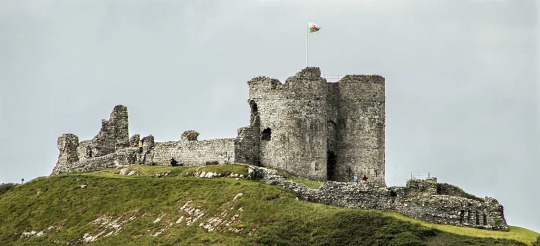
Criccieth Castle, also known as Castell Criccieth, is an extraordinary castle that truly captures the hearts of all who visit. It sits high above Tremalog Bay and is a timely reminder of all that transpired between the Welsh and English to define medieval times. While it may seem serene and beautiful sitting up there, it has a controversial and intriguing past that has been full of mishaps and detrimental instances.
The history of Criccieth Castle
There are a lot of inconsistencies surrounding Criccieth Castle and while we may never know the whole truth, what we do know is particularly daunting. A tale of trial, error, sieges, and plenty of speculation surrounds Criccieth Castle and all of it happened in only a small amount of time. On the surface, we have astonishing views and a beloved castle, but below the surface, it becomes so much more.
The early history of Criccieth Castle
This wonderful and rustic stone castle is said to have been started in the 1230s and is suspected to have been built by Llewelyn the Great. Llewelyn the Great was a Welsh prince who held plenty of power over the castle and many other things. He built the original structures of Criccieth Castle himself, however, in 1240, Llewelyn the Great died which in turn created a large amount of disaster.
When Llewelyn the Great died, it meant that there was room to replace him as a strong ruler. This caused King Henry III of England to fight for supreme power and overrule everyone much as Llewelyn the Great once did. He then proceeded to cause a further ruckus by depriving Gwynedd of control over all of the land’s east of Conwy.

Portrait of Llywelyn The Great
Incarceration at the castle
Once Llewelyn the Great had passed, his sons began to resent each other and started to fight. Dafydd ap Llewelyn proceeded to hold his brother Gruffydd as a prisoner at Criccieth Castle. Though we aren’t sure if that is the first instance that the castle has held a prisoner, it certainly wasn’t the last time. Two decades later, Llewelyn ap Gruffudd (son of Gruffydd ap Llywelyn 1200–1244) incarcerated prince Maredudd ap Rhys Gryg.
Gaining control
It was a whole decade later when Gruffydd ap Llewelyn’s son, Gruffudd, gained control and began to fight for Gwynedds domination once again and fought ruthlessly with the English ally, Maredudd ap Rhys Gryg who was later imprisoned in the castle. After all was said and done, Gruffudd won the battle and by virtue of the Treaty of Montgomery from 1267, the Welsh and English both readily accepted him.
Though this success didn’t last very long, because soon after, more disaster arose. Gruffudd could not resist entering into more conflict but this time his arrow was aimed at the new king of England, Edward I which then resulted in a war that sent Criccieth Castle to the sidelines.
The First War of Welsh Independence
The First War of Welsh Independence (1277 – 1283) begun when Edward I declared Gruffudd a rebel and sought to destroy him. It was then that the English started to invade Wales. English armies swarmed from all over to defeat the princes and gain power and it ended in the defeat and annexation of the remaining Principality of Wales.
Afterwards, Gwynedd was the leading principality and all of the princes had gained control over most of the country. This resulted in the remaining Welsh Princes their vassals and gained the title of the Prince of Wales.

Edward I of England
The Battle of Llandeilo Fawr
Once again, war erupted between England and Wales in to an explosive extent. Edward I had essentially planned to send his large armies into Wales in the fronts to surround Llewelyn ap Gruffudd’s army and destroy them. The English army, led by Gilbert de Clare, was then sent to subdue and hold down the southern areas while the other armies were sent elsewhere.
Gilbert de Clare and his large army had easily captured Carreg Cennen Castle from the Welsh and soon after, the men sacked the castle and later headed back to Dinefwr Castle. Though on the way misfortune struck and they were ambushed by Welsh troops. This resulted in much of the army being destroyed.
Although this was a great victory for the Welsh, the tides of war soon turned in Edwards favour when suddenly Llywelyn marched his army south. Llywelyn was killed at the Battle of Orewin Bridge on 11th December 1282.
Edward raised a new army and in 1283, the rest of the Gwynedd castles were captured, including Criccieth Castle.
The siege of 1294
The castle, which by now is no stranger to controversy now becomes victim to a siege. In the siege of 1294, Madoc ap Llewelyn who was distantly related to Gruffudd, decided to start an uprising against English rule that quickly made its way throughout Wales. The mighty castle readily withstood this siege, however, it eventually did meet its maker in 1404, when it fell into the hands of Owain Glyndwr who had the castle walls torn down and after Criccieth Castle soon became ash when he burned it.
It stayed that way until 1933 when Lord Harlech had it granted to the government.
The construction of Criccieth Castle
There were three building phases and a plethora of different periods strictly for remodelling. It is said that the 13th century was a rather late point in time for initiating a castle and that it was particularly odd in that part of Wales. It is also fairly unusual that there isn’t much to be said about Criccieth Castle.
The earliest part of the castle is said to be the inner ward which was personally started by Llewelyn the Great himself. Unlike other Welsh Native strongholds, the inner ward at the castle was beautifully protected by a gatehouse with two D-shaped towers. Those towers were then heavily protected by big gates with murder holes in the passage and arrow slits in each tower that faced outwards.
There is a possibility that some of these features are replicated from specific English castles such as Beeston Castle and Montgomery Castle. Then we take a look at the two towers of the gatehouse that have gained significant popularity as a staple piece of the castle. They provided accommodation for a while and then were raised significantly in height in the Edwardian period.

5 Criccieth Castle facts
Criccieth Castle was built and destroyed by powerful Welsh Princes.
Criccieth Castle is said to have been built in the early 13th century, though no actual confirmation has ever been found as to when the castle was actually built, and which parts were built in which century at what time.
The steep, inaccessible, and rugged cliffs surrounding the castle particularly on the eastern and southern sides offered the castle a great amount of protection and there are plenty of terrifying areas you could fall so only the bravest would dare to conquer the castle.
The inner ward is said to be the oldest Welsh part of the castle built by Llewelyn the Great.
These days, the castle has been preserved as a magnificent ruin and has a particularly significant layout of all the defensive elements although plenty has been lost. The ruins of Criccieth Castle are able to be seen by visitors, and you can find prices and tickets here.
7 notes
·
View notes
Text
"Nest ferch Rhys, born around 1085, was the daughter of Rhys ap Tewdwr (Rhys ap Tudor Mawr) [Tartar or Tatar], king of the Deheubarth in South Wales. Nicknamed ‘Helen of Wales’ she was renowned for her beauty; like Helen of Troy, her good looks led to her abduction and civil war.
Princess Nest led an eventful life. She was born a princes’ daughter, became a king’s mistress and then a Norman’s wife; she was abducted by a Welsh prince and bore at least nine children to five different men.
She was the grandmother of the celebrated cleric and chronicler Gerald of Wales and through her children’s alliances, is related to both the Tudor and Stuart monarchs of England as well as Diana, Princess of Wales and US President John F. Kennedy [...]
During a battle against the Normans outside Brecon in 1093, Nest’s father was killed and South Wales was overrun by the Normans. Nest’s family was split up; some like Nest were held hostage, some were captured and executed and one, Nest’s brother Gruffydd, fled to Ireland.
As the daughter of the last king of South Wales, Nest was a valuable asset and taken as a hostage to William II’s court. Although only about 14 years old at the time, there her beauty caught the eye of Henry, William’s brother, later to become King Henry I. They became lovers [...]
Henry was noted for his womanising, apparently fathering over 20 illegitimate children both before and after his marriage and coronation in 1100. Nest gave birth to his son, Henry FitzHenry, in 1103.
King Henry then married Nest off to Gerald de Windsor, an Anglo-Norman baron much older than his new wife. Gerald was Constable of Pembroke Castle and ruled Nest’s father’s former kingdom for the Normans [...]
Although an arranged marriage, it appears to have been a relatively happy one and Nest bore Gerald at least five children.
Constantly threatened with attack by the Welsh, Gerald built a new castle at Carew and then another at Cilgerran where Nest and her children went to live around 1109. Nest was now in her 20s and by all accounts a great beauty.
The Welsh prince of Powys, Cadwgan was one of the leading Welsh rebels. Cadwgan’s son Owain was Nest’s second cousin and having heard tales of her stunning looks, was anxious to meet her.
At Christmas 1109, using his kinship as an excuse, Owain attended a banquet at the castle. Upon meeting Nest and struck by her beauty, he apparently became infatuated with her. Owain is said to taken a group of men, scaled the walls of the castle and started a fire. In the confusion of the attack, Gerald escaped down a privy hole while Nest and two of her sons were taken prisoner and abducted by Owain. The castle was sacked and plundered.
Whether Nest was raped or succumbed to Owain of her own accord is unknown, but her abduction incensed King Henry (her former lover) and the Norman lords. Owain’s Welsh enemies were bribed to attack him and his father, thus starting a minor civil war.
Owain and his father fled to Ireland, and Nest was returned to Gerald. However this was not the end of the unrest: the Welsh rose in rebellion against the Normans. It was not just a conflict between the Normans and the Welsh, it was civil war as well, pitting Welsh prince against Welsh prince [...]
Owain was then ambushed and killed by a band of Flemish archers, led by Gerald.
Gerald died a year afterwards. After his death, Nest sought comfort in the arms of the Sheriff of Pembroke, a Flemish settler named William Hait with whom she had a child, also called William.
Shortly afterwards, she married Stephen, the constable of Cardigan, by whom she had at least one, maybe two, sons. The eldest, Robert Fitz-Stephen became one of the Norman conquerors of Ireland."
Walter FitzOther (fl. 1086, died 1100/1116) son of Otho Gherardini. He was a feudal baron of Eton in Buckinghamshire (now in Berkshire) and was Constable of Windsor Castle in Berkshire [...] a principal royal residence of King William the Conqueror, and was a tenant-in-chief of that king of 21 manors in the counties of Berkshire, Buckinghamshire, Surrey, Hampshire and Middlesex, as well as holding a further 17 manors [...]
As the Fitz prefix to his surname suggests, Walter was the son of Otho Gherandini, an honorary baron of England.
He married Gladys ap Conwyn, daughter of Rywallon ap Conwym, Prince of North Wales, by whom he had children including four sons [...]
William FitzWalter (died c. 1160), eldest son, 2nd feudal baron of Eton. His son was William de Windsor (died c. 1176), 3rd feudal baron of Eton, who adopted the surname de Windsor. The feudal barony of Eton soon split into moieties between two members of the family, William de Windsor (died 1215/16) and his cousin Walter de Windsor (died 1203). Walter de Windsor died without children in 1203, when his two sisters became his co-heiresses. The other moiety continued in the descendants of William de Windsor until at least the time of Richard de Windsor, the son of Richard de Windsor (1258–1326)
Robert FitzWalter, second son, inherited the nearby manor of Eton in Berkshire.
Gerald de Windsor (c. 1075 – 1135), (alias Gerald FitzWalter), third son, the first castellan of Pembroke Castle in Pembrokeshire (formerly part of the Kingdom of Deheubarth), in Wales, who was in charge of the Norman forces in southwest Wales. He was the progenitor of the FitzGerald, FitzMaurice and De Barry dynasties of Ireland, who were elevated to the Peerage of Ireland in the 14th century and was also the ancestor of the prominent Carew family, of Moulsford in Berkshire, Carew Castle in Pembrokeshire"
"Gerald de Windsor (c. 1075–1135), alias Gerald FitzWalter, was the first castellan of Pembroke Castle in Pembrokeshire (formerly part of the Kingdom of Deheubarth), in Wales, and was in charge of the Norman forces in southwest Wales. He was the ancestor of the FitzGerald, FitzMaurice, De Barry, and Keating dynasties of Ireland, who were elevated to the Peerage of Ireland in the 14th century and was also the ancestor of the prominent Carew family, of Moulsford in Berkshire, Carew Castle in Pembrokeshire [...]
Upon his father's death after 1100, Gerald's oldest brother William inherited the office of Constable of Windsor Castle; his second oldest brother Robert inherited the nearby manor of Eton in Berkshire. Gerald's family was one of the "service families" on whom King William the Conqueror relied for his survival.
Gerald married Nest ferch Rhys ("Nesta") a Welsh princess, daughter of Rhys ap Tewdwr, the last King of Deheubarth in Wales. Nest brought the manor of Carew as part of her dowry [...] They had five children:
William FitzGerald, Lord of Carew and Emlyn
Maurice FitzGerald, Lord of Lanstephan
David FitzGerald, Bishop of St. David's
Angharad
Gwladys
In 1109 his wife Nesta was abducted by her second cousin Owain ap Cadwgan. According to the Brut y Tywysogion, Owain and his men entered the couple's home (assumed by historians to have been either Cilgerran Castle or Little Cenarch) and set fire to the buildings. When Gerald was awoken by the noise, Nesta urged him to escape by climbing out through the drain-hole of the garderobe. Owain then seized Nesta and her children and carried her off. Some sources however suggest that she went with him willingly.
Gerald's influence was such that due to Nesta's abduction Owain and his father soon lost much of their territory of Powys. Owain himself was obliged to go into exile in Ireland and when he returned in 1116, he was killed when his retinue of fifty men at arms was cunningly attacked by Gerald and his large cohort as they both traveled to aid the king of England.
Gerald's son William had a daughter named Isabella Le Gros who married William De Haya Walensis by whom she had sons David Walensis and Philip Walensis. David and Philip were surnamed in Latin Walensis ("of Wales"), and were the founders of the widespread family surnamed Welsh or Walsh or Wallace. Philip Walensis had a son named Howell of Welsh Walensis.
Nesta is the female progenitor of the Fitzgerald Dynasty, and through her the Fitzgeralds are related to Welsh royalty and to the Tudors (Tewdwrs [Tartars or Tatars]). The Tudors are descended from Nest's father Rhys ap Tewdwr (Anglicized to "Tudor"). Henry Tudor, King of England, was a patrilineal descendant of Rhys ap Tewdwr. Consequently, Gerald and Nest's offspring, the Fitzgeralds, are distant cousins to the English Tudors."
"The Keatings sprang from a house whose beginnings, so say the legends, go back to the days of /troy. Definite records take us back well over a thousand years, and suppose that the family was indigenous to Italy, being either E/truscan or Roman. The Gherardini, the Ancestral family of the Keatings, Fitzgeralds, Fitzmaurices, Redmonds, Carews, and many other prominent Irish families, were one of the seigniorial families that fell when the Republic of Florence was founded.
Its members had estates in various parts of the Florentine territory. In Florence, their principal residence was near the Ponte Vecchio bridge. Their tower still exists, being part of the Palazzo Bartolomei. The first date we have in the family history is 910 A.D. [...] The Italian historian Gammurini, says "the Gherardi were among the most ancient and wealthy families of Tuscany in 900 A.D." Family legend states that Anaes, a survivor of the siege of /troy, wandered for seven years after it’s overthrow, until he came to what was then called Latium, (now Italy). He brought with him his father and small son Ascanius, for whom the province of Tuscany is named. Anaes married the daughter of King Turnus of Latium, who was killed in battle. Anaes succeeded him as king of Latium and divided his lands among his descendants. To Gherardo, he gave the land of He/truria, where Florence now stands.
The family flourished until the year 1125. Then, during a political upheaval, the patrician families were driven into exile. In order to remain in Florence, the Gherardini renounced their patrician rank and became mere citizens. Later they were restored to their ancient honors, became very wealthy, and served the Republic of Florence both in the senate and on the battlefield. Three were Consuls of the Republic; others died as leaders of the Republican armies in the many civil wars. Confiscations and losses during the civil wars impoverished the Gherardini, and they also suffered much by the destruction of their property in the great fire of Florence in 1303. From the 14th century onwards they seem to have played a smaller part in the history of Florence. At different times, between 1000 and 1400, individuals of the family emigrated, passing into France, England, Wales, Ireland, Cracow and the Canary Islands. Those who stayed in Florence became extinct, as did those in France and Cracow. It is pleasant to record that the Gherardini of Florence and the Irish "Geraldines" did not lose touch with each other. There are records of visits back and forth until the late 1500's."
Lisa del Giocondo (Gherardini; 15 June 1479 – 15 July 1542) was an Italian noblewoman and member of the Gherardini family of Florence and Tuscany. Her name was given to the Mona Lisa, her portrait commissioned by her husband and painted by Leonardo Da Vinci during the Italian Renaissance.
Little is known about Lisa's life. Born in Florence and married in her teens to a cloth and silk merchant who later became a local official, she was a mother to five children and led what is thought to have been a comfortable and ordinary middle-class life. Lisa outlived her husband, who was considerably her senior.
Centuries after Lisa's death, the Mona Lisa became the world's most famous painting and took on a life separate from Lisa, the woman [...] In 2005, Lisa was definitively identified as the model for the Mona Lisa [...]
Lisa's Florentine family was old and aristocratic but over time had lost their influence. They were well off but not wealthy, and lived on farm income in a city that was among the largest in Europe. While economically successful, there were great disparities in wealth among Florence's inhabitants.
Antonmaria di Noldo Gherardini, Lisa's father, came from a family who had lived on properties near San Donato in Poggio and only recently moved to the city [...]
Gherardini at one time owned or rented six farms in Chianti that produced wheat, wine and olive oil and where livestock was raised.[7]
Lisa was born in Florence on 15 June 1479, on Via Maggio,[6] although for many years it was thought she was born on Villa Vignamaggio just outside Greve, one of the family's rural properties.[8] She is named for Lisa, a wife of her paternal grandfather.[9] The eldest of seven children, Lisa had three sisters, one of whom was named Ginevra, and three brothers, Giovangualberto, Francesco, and Noldo [...]
Noldo, Gherardini's father and Lisa's grandfather, had bequeathed a farm in Chianti to the Santa Maria Nuova hospital. Gherardini secured a lease for another of the hospital's farms and, so that he could oversee the wheat harvest, the family spent summers there at the house named Ca' di Pesa [...]
On 5 March 1495, 15-year-old Lisa married Francesco di Bartolomeo di Zanobi del Giocondo, a modestly successful cloth and silk merchant, becoming his third wife. Lisa's dowry was 170 florins and the San Silvestro farm near her family's country home, which lies between Castellina and San Donato in Poggio, near two farms later owned by Michelangelo. The modest dowry may be a sign that the Gherardini family was not wealthy at the time and lends reason to think she and her husband loved each other [...]
Lisa's marriage may have increased her social status because her husband's family may have been richer than her own. Francesco is thought to have benefited because Gherardini is an "old name". They lived in shared accommodation until 5 March 1503, when Francesco was able to buy a house next door to his family's old home in the Via della Stufa. Leonardo is thought to have begun painting Lisa's portrait the same year.
Lisa and Francesco had five children: Piero, Camilla, Andrea, Giocondo, and Marietta, four of them between 1496 and 1507. Lisa lost a baby daughter in 1499. Lisa also raised Bartolomeo, the son of Francesco and his first wife Camilla di Mariotto Rucellai, who died shortly after the birth. Andrea [...] one of the youngest, was later the wife of a moscovite nobleman from Kozhin family, who was from the court of Prince Basil III of Moscow [...]
Francesco became an official in Florence. He was elected to the Dodici Buonomini in 1499 and to the Signoria in 1512, where he was confirmed as a Priori in 1524. He may have had ties to Medici family political or business interests. In 1512, when the government of Florence feared the return of the Medici from exile, Francesco was imprisoned and fined 1,000 florins. He was released in September when the Medici returned [...]
In June 1537, in his will among many provisions, Francesco returned Lisa's dowry to her, gave her personal clothing and jewelry and provided for her future. Upon entrusting her care to their daughter Ludovica and, should she be incapable, his son Bartolomeo, Francesco wrote, "Given the affection and love of the testator towards Mona Lisa, his beloved wife; in consideration of the fact that Lisa has always acted with a noble spirit and as a faithful wife; wishing that she shall have all she needs…" [...]
In one account, Francesco died in the plague of 1538. Lisa fell ill and was taken by her daughter Ludovica to the convent of Sant'Orsola, where she died on 15 July 1542, at the age of 63.[24][25][26] In a scholarly account of their lives, Francesco was nearly 80 years old when he died, and Lisa may have lived until at least 1551, when she would have been 71 [...]
Like other Florentines of their financial means, Francesco's family members were art lovers and patrons. His son Bartolomeo asked Antonio di Donnino Mazzieri to paint a fresco at the family's burial site in the Basilica della Santissima Annunziata di Firenze. Andrea del Sarto painted a Madonna for another member of his family. Francesco gave commissions to Leonardo for a portrait of his wife and to Domenico Puligo for a painting of Saint Francis of Assisi. He is thought to have commissioned Lisa's portrait to celebrate both Andrea's birth and the purchase of the family's home [...]
During the spring of 1503, Leonardo had no income source, which may in part explain his interest in a private portrait. But later that year, he most likely had to delay his work on Mona Lisa when he received payment for starting The Battle of Anghiari, which was a more valuable commission and one he was contracted to complete by February 1505. In 1506, Leonardo considered the portrait unfinished. He was not paid for the work and did not deliver it to his client. The artist's paintings traveled with him throughout his life, and he may have completed the Mona Lisa many years later in France, in one estimation by 1516 [...]
The Mona Lisa has been in custody of France since the 16th century, when it was acquired by King Francis I; after the French Revolution, it became the property of the French Republic itself. Today about six million people visit the painting each year at the Louvre in Paris, where it is part of a French national collection."
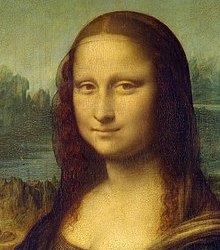
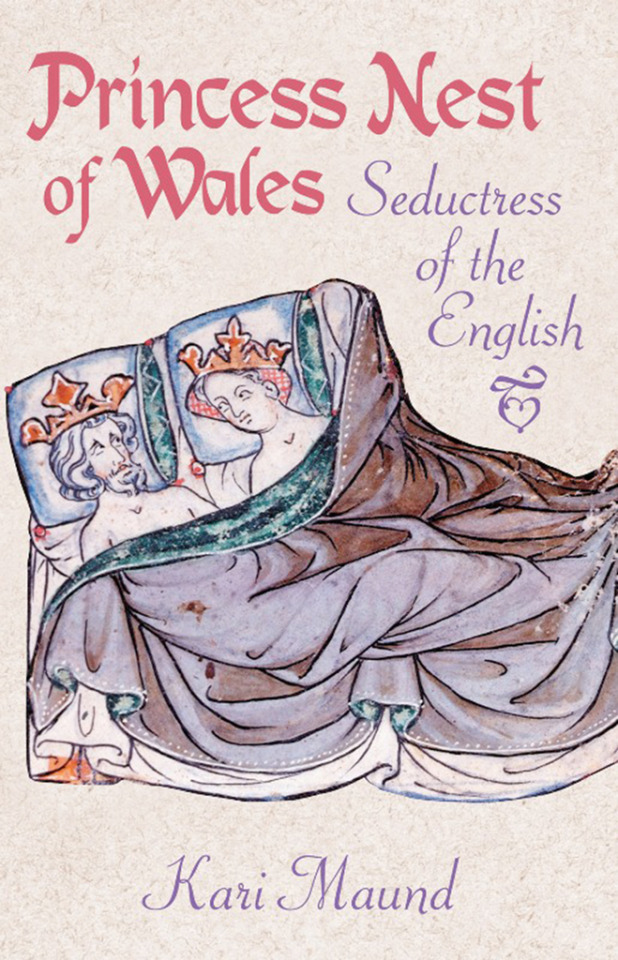
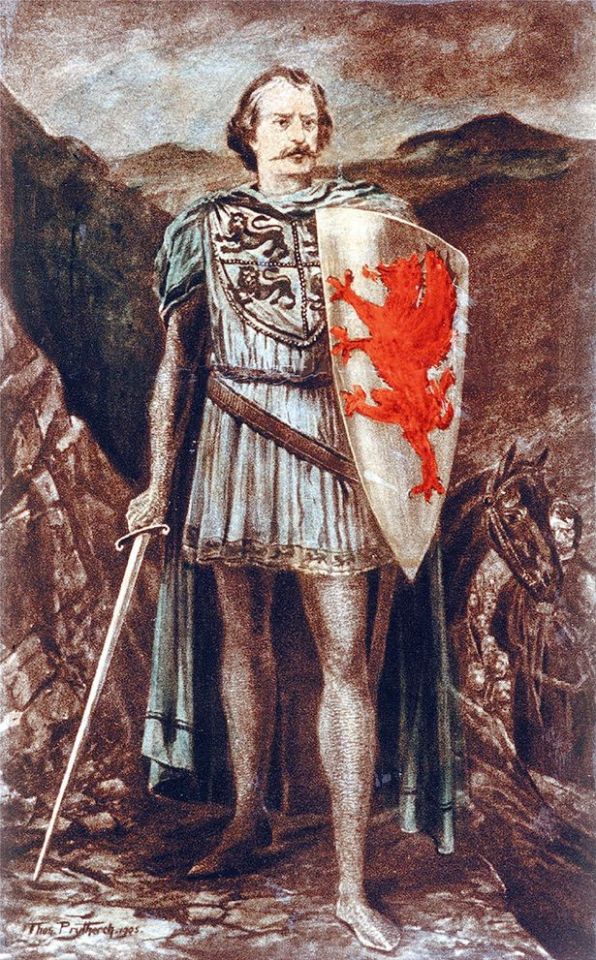
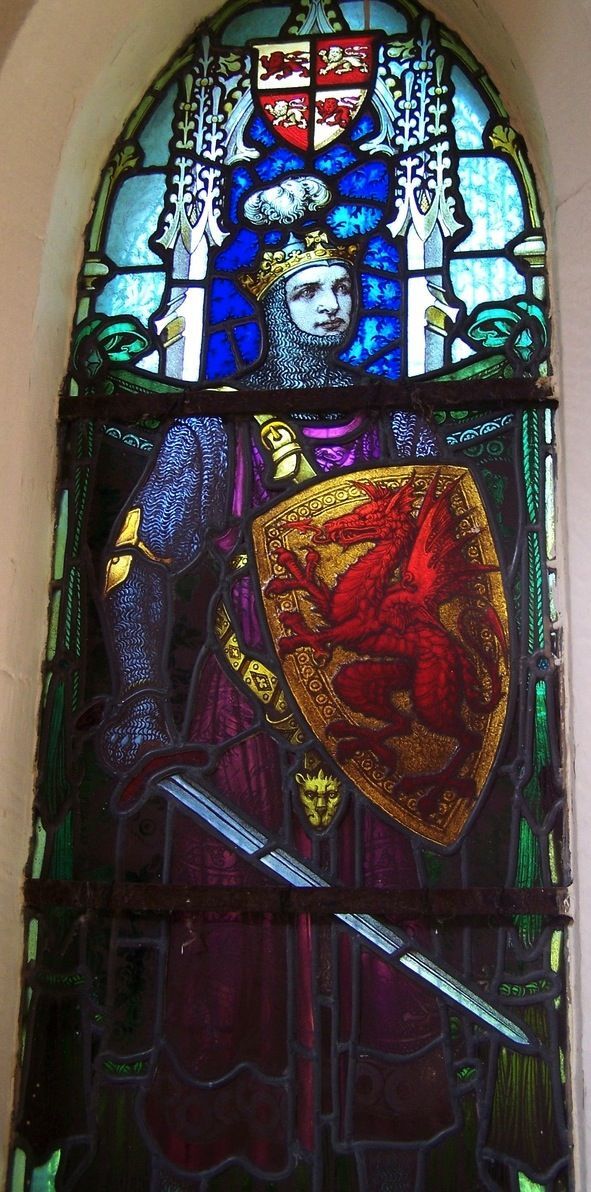
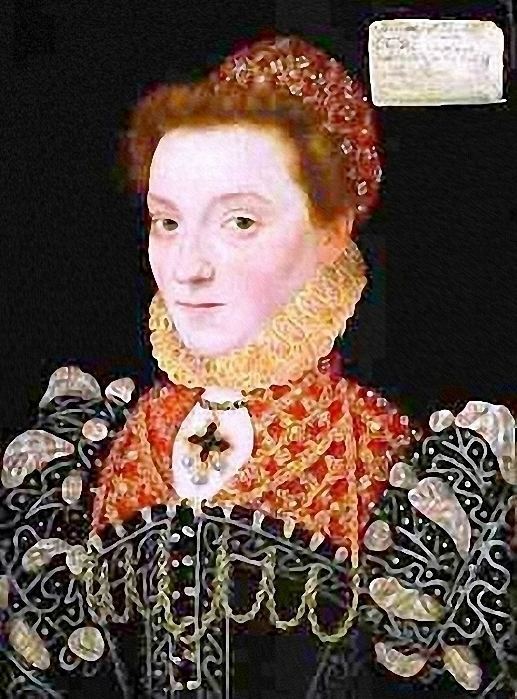

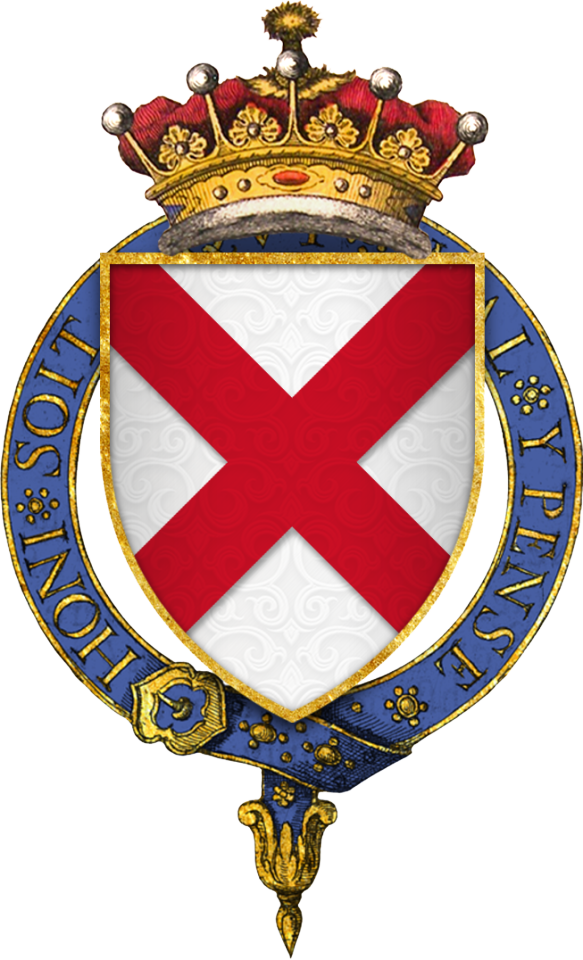
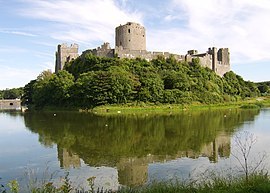
2 notes
·
View notes
Photo

Arms of Rhys ap Tewdwr (c. 1040 – 1093)
From Encyclopedia of Heraldry by John Burke and John Bernard Burke (1844)
Blazon: Gules a lion rampant within a bordure indented or
This week, we’re going from the almost-historically-grounded arms attributed to Llywelyn ap Gruffudd to the absolutely spurious arms attributed to Rhys ap Tewdwr and the House of Dinefwr. It is a pretty common attribution, but given that the power of Dinefwr and their realms of Deheubarth had faded considerably by the time heraldry started to gain traction in Wales, I’m somewhat skeptical that these arms have any basis in historical fact.
Anyway. Given that Rhys ap Tewdwr died in literally the eleventh century, we don’t have a whole lot of information about him. He was descended from Rhodri the Great via Cadell ap Rhodri and Hywel Dda. His last wife, Gwladys ferch Rhiwallon of Powys, had a daughter named Nest, whose descendants include the families of FitzGerald and de Barry. Unfortunately, Rhys’ death led to the breakup of his lands, with his heir Gruffydd ending up with some, and the Normans ending up with a whole lot more.
65 notes
·
View notes